The Projects
News Framing of Dams and Rivers
The news media can have a major impact on our perceptions about social and environmental issues. Norms about how stories get reported, such as maintaining objectivity and balance in news stories, and the inevitability of framing as a way of helping readers make sense of an issue influences how we understand dams, rivers and river restoration.
Questions
- How are dams, rivers, and river restoration issues framed in news articles?
- What are some of the possible consequences for framing dams, rivers, and river restoration in specific ways? What are alternative frames that could be considered?
- What issues or perspectives are highlighted and which seem to be ignored?
- Who is cited as expert and what do they say?
References and Links
Cox, R., & Pezzullo, P. (2016). News Media and Environmental Journalism (Old and New). In Environmental Communication and the Public Sphere (4th ed.). SAGE.
Goffman, E. (1986). Frame analysis: An essay on the organization of experience. Boston, Mass.: Northeastern University Press.
Hansen, A. (2010). Environment, media and communication. London: Routledge.
Lazarsfeld, P. F. & Merton, R. K. (2004). Mass communication, popular taste, and organized social action, In J. D. Peters & P. Simonson (Eds.), Mass communication and American social thought: Key texts, 1919-1968. Lanham, MD: Rowman & Littlefield, 230–241.
Social and Environmental Justice
When we accept that Environmental Communication is a crisis discipline and that we as scholars and practitioners have an ethical duty to address unsustainable communication, then we must also take seriously the complex and pressing issues of social and environmental justice. In her groundbreaking work in “Cancer Alley,” that strip of contaminated ground and water between Baton Rouge and New Orleans, LA, Phaedra Pezzullo (2003) argues that we must attend to “what is left to be done when we (re)build our communities, contest official [histories], and recognize the worth of joining the movement for environmental justice” (p. 247). The projects here address social and environmental justice and intend to raise awareness about environmental racism as it has occurred in our home watershed, the Penobscot River.
Questions
- How do members of the Penobscot Nation communicate about the Penobscot River Restoration? In their words, what does this project mean for them?
- What are the Penobscot Nation’s meanings about the river? How do these meanings shape their relationship to the river and motivate their organizing for justice?
- What is the history of environmental racism towards the Penobscot Nation? How did tribal members resist this racism and seek justice for themselves?
- In what ways is the Penobscot River Restoration Project aligned with the Penobscot Nation's environmental and social justice movement? What work still needs to be done for justice and sustainability?
References and Links
Cox, R. (2007). Nature’s “Crisis Disciplines”: does environmental communication have an ethical duty? Environmental Communication: A Journal of Nature and Culture, 1(1), 5–20. http://doi.org/10.1080/17524030701333948
Pezzullo, P. C. (2003). Touring “Cancer Alley,” Louisiana: Performances of Community and Memory for Environmental Justice. Text and Performance Quarterly, 23(3), 226–252. http://doi.org/10.1080/10462930310001635295
Sandler, R. D., & Pezzullo, P. C. (2007). Environmental justice and environmentalism: The social justice challenge to the environmental movement. MIT press.
Visualizing Dams, Rivers, and River Restoration
From the iconic salmon jumping over the newly restored falls to the sublime encounter with a restored mill dam, images and practices of visualizing dams and rivers undoubtedly shape our understandings and actions related to dam removal and restoration. Visual communication focuses on the relationship between images and systems of meaning; encoding and decoding environmental media; visualization technologies; and environmental art.
Questions
- What images and visualization strategies used in communicating about dams, rivers, and river restoration?
- What are the meanings associated with these images and how might a consumer of these images interpret them in different ways?
- What are the most frequent or powerful symbols related to dams and rivers? Why are they so powerful?
- What role does environmental art play in constructing understanding and action about dams?
References and Links
Cox, R., & Pezzullo, P. (2016). The Environment in/of Visual and Popular Culture. In Environmental Communication (4th ed., pp. 69-88). Los Angeles, London, Washington DC, New Dehli, Singapore, Boston: Sage Publications.
Science and Risk Communication about Dams
Questions about the impacts of dams, risks to humans and ecosystems, and the various tradeoffs of different types of decisions about dams, rivers, and hydroelectric and other forms of energy, are inevitably shaped by science and how that science is communicated to and within academic and public audiences. Science is essential for informed decision-making but it sometimes comes with controversy and unintended consequences.
Questions
- What do scientists who have been involved with the Penobscot River Restoration Project say about its importance and the potential risks or tradeoffs of dam-related decision-making?
- According to scientific studies, what are the different types of impacts of dams and dam removal? How does science inform decision-making about potential options?
- Are all experts about the Penobscot River Restoration project scientists? If not, who are the other experts about this Project and what do they say? How is this similar to or different from the scientists?
References and Links
Nieland, J. L., Sheehan, T. F., and Saunders, R. (2015) Assessing demographic effects of dams on diadromous fish: A case study for Atlantic salmon in the Penobscot River, Maine. ICES Journal of Marine Science, 72, 2423–2437.
Opperman, J. J., Royte, J., Banks, J., Day, L. R., & Apse, C. (2011). The Penobscot River, Maine, USA: A basin-scale approach to balancing power generation and ecosystem restoration. Ecology and Society 16(3), 7.
Saunders, R., Hachey, M. A., & Fay, C. W. (2006). Maine's diadromous fish community. Fisheries 31(11), 537-47.
Trinko Lake, T. R., Ravana, K. R., & Saunders, R. (2012): Evaluating changes in diadromous species distributions and habitat accessibility following the Penobscot River Restoration Project. Marine and Coastal Fisheries: Dynamics, Management, and Ecosystem Science, 4(1), 284-293.
Rhetoric of Dams and Rivers
In one of the earliest papers written in the field of EC, rhetorical scholar Christine Oravec analyzed the controversy over the Hetch Hetchy dam in Yosemite National Park and concluded “One might expect that the central argument of the debate [over the Hetch Hetchy dam] would focus on the standard topics of beauty and economy. But at its foundation, the debate also hinged upon differing presumptions concerning the nature of the “public” and its relationship to the natural environment” (Oravec, 1984, p. 444). In this, she exemplifies how rhetoric views language as symbolic action and how rhetoric calls our attention to the construction of arguments and how arguments shape our lives.
Questions
- What arguments do people make about dams, rivers, and river restoration? How do they persuade about the importance, effects, or tradeoffs of dams?
- How do arguments compare with one another? Who makes what type of argument?
- What are the metaphors and tropes people use to describe dams and river restoration?
- How is the Penobscot River Restoration a “rhetorical situation” defined by an urgent problem, multiple audiences, and a host of constraints?
References and Links
Bitzer, L. F. (1992). The rhetorical situation. Philosophy & Rhetoric, 1-14.
Crowley, S., and Hawhee, D. (2012). Ancient rhetorics for contemporary students. Upper Saddle River, NJ: Pearson.
Oravec, C. (1984). Conservation vs. preservationism: The "public interest" in the Hetch Hetchy controversy. Quarterly Journal of Speech, 70(4), 444-458.
Public Participation, Collaboration, and Conflict Mediation in Dam and Restoration Policy
The ways in which members of the public become involved in decision-making about issues like dam management, removal, and restoration shape the outcomes. In some cases, public participation is set up so that members of the public can have access to information they need about the situation and voice their opinion about the issues in meaningful ways. In other cases, the process is not well designed, where the organizers might instead adopt a position of Decide, Announce, and Defend, which can cause conflict to escalate (Hendry, 2004). Public participation focuses on whether and how members of the public had access to participating in public hearings, an ability to express their opinions about the project and feel heard, and how differences in opinion were negotiated in collaboration or resulted in ongoing conflict.
Questions
- Who participated in the decision-making about the Penobscot River Restoration? How did this participation occur?
- In the case study artifacts, is there evidence of conflict or controversy? If so, what are the points of conflict? Were these resolved, and if so, how?
- Did members of the public have access to information about the project? If so, where did they get their information and how did this shape their participation?
- What parts of the collaboration and/or public participation process seemed to promote this success? Would these elements apply in other situations?
References and Links
Hendry, J. (2004). Decide, announce, defend: Turning the NEPA process into an advocacy tool rather than a decision-making tool. In S. P. Depoe, J. W. Delicath, & M.-F. A. Elsenbeer (Eds.), Communication and public participation in environmental decision-making (pp. 99-112). Albany, NY: State University of New York Press.
Senecah, S.L. (2004). The Trinity of Voice: The role of practical theory in planning and evaluating the effectiveness of environmental participatory processes. In S. P. Depoe, J. W. Delicath, & M.-F. A. Elsenbeer (Eds.), Communication and public participation in environmental decision-making (pp. 13-33). Albany, NY: State University of New York Press.
Discussion
Stillwater River Field Trip
Bridie McGreavy & Tyler Quiring
At the beginning of the Fall 2015 semester, Dr. Bridie McGreavy brought students from her two environmental communication courses to the Stillwater river (a branch of the Penobscot) so they could understand, appreciate, and think differently about the river that would be the basis of their final projects. Students participated in two rounds of journaling. In the first round, they reflected on how they make sense of the river, including the metaphors, ideas, and expectations they brought to the banks. Then McGreavy shared a narrative account of the Stillwater that blended material from Penobscot tribal history, Catherine Schmitt's touchstone book The President's Salmon, and McGreavy's own reflections. Afterwards, students again sat by the river and considered the ways in which the story they had just heard shaped their sense of the place and their understanding of the role and impact of dams.
Environmental Communication Lecture: Dams, Rivers, and Society
David Hart
On September 16, 2015, Dr. David Hart gave a lecture to the Environmental Communication class, titled "Dams, Rivers, and Society: Communication Pathways to a Sustainable Future." Dr. Hart is the director of the Senator George J. Mitchell Center for Sustainabiltiy Solutions at the University of Maine.
Environmental Communication Lecture: Framing Fish
Catherine Schmitt
Catherine Schmitt, communications director for the Maine Sea Grant College Program at the University of Maine, gave a lecture to the Environmental Communication class, titled "Framing Fish."
You can find a PDF of the lecture slides here.
Framing the Penobscot
River Restoration
Alan Bennett, Derek Douglass, Chase Brunton, Maggie Bouchard, & Diyyinah Jamora
Introduction
The Penobscot River Restoration Project has long been the focus of news media since its beginnings in 2004, drawing national news coverage, including from the New York Times and the CBS piece below, to local coverage in the Bangor Daily News. Because the news media have such great influence in the public sphere, it is important to consider how news media discuss various issues, with special relevance to environmental issues.
As the culmination of a semester’s work for CMJ 493: Environmental Communication, this project will examine the discussion of the Penobscot River Restoration Project in national and local news media using several theoretical frameworks. We invite you to follow us downstream as we evaluate news frames of dams on the more than 30-mile stretch of river between the Howland Dam to the site of the former Veazie dam.
Theoretical Framework
For this analysis of journalistic coverage of the Penobscot River Restoration Project, we will be using agenda-setting theory as well as an in-depth look at framing theory as our theoretical framework.
Agenda-setting theory asserts that the media does not tell us not what to think, but it does tell us what to think about. We observed an abundance of news coverage of the Penobscot River Restoration Project in local and mainstream media. By examining the content of news articles found online, we can see how “journalists in particular influence public opinion according to the salience they give to certain news items” (Laughey, 2007, p.22). By making an issue more salient, the media can call the public’s attention to social movements and help organize social action (Lazersfeld & Merton, 2004).
In addition to the degree of exposure an issue receives in the news, its frame — or the lens through which a story is presented — influences the audience’s perceptions and understanding of the issue. Goffman’s theory posits that people make sense of the world through a frame which constitutes the “principles of organization which govern events…and our subjective involvement in them” (1986, p.10-11). Relating to how framing in journalism shapes interpretations, “the frame acts as a lens through which…issues are viewed, highlighting certain images and refracting others” (Clampitt, 2002, n.p.). Frames can also limit our interpretations (Hansen, 2010, p.31).
Agenda-setting theory is important since support for the Penobscot River Restoration Project may not have been widespread throughout the state if the local media stories did not give the project as much public exposure. Thus, our inquiry into news coverage will examine which angles different articles take on different dams and which perspectives are left out for other dams. Framing theory looks at how exactly the story is presented, examines which perspective or viewpoint the article is taking, and how this guides the reader’s understanding.
Frame Analyses
Methodology
For the purposes of this project, a number of news articles were analyzed for their framing of the Penobscot River Restoration Project. The ultimate goal of this analysis was to determine whether the frames of the restoration project influence the meaning of the project and in what ways. For this analysis, there were three guiding questions:
- Do the frames aid restoration or do the frames complicate the message, making it difficult to understand?
- What are the motives behind the frames and how does the public view them?
- Is the framing helping or hurting the restoration project?
Four dominant frames were apparent across nearly all articles analyzed for this project: Cultural, Economic/Sustainable, Ecological, and Collaborative. While all frames are used in discussing the restoration project as a whole, this project explores each dam through a dominant frame pertaining to that dam, flowing downstream from Howland, much like the waters of the Penobscot River. The following analysis discusses each dam with regard to its dominant frame as it pertains to the guiding questions.
Evaluating Penobscot River Dam Frames in News Media
Dam Site #1: Howland Dam
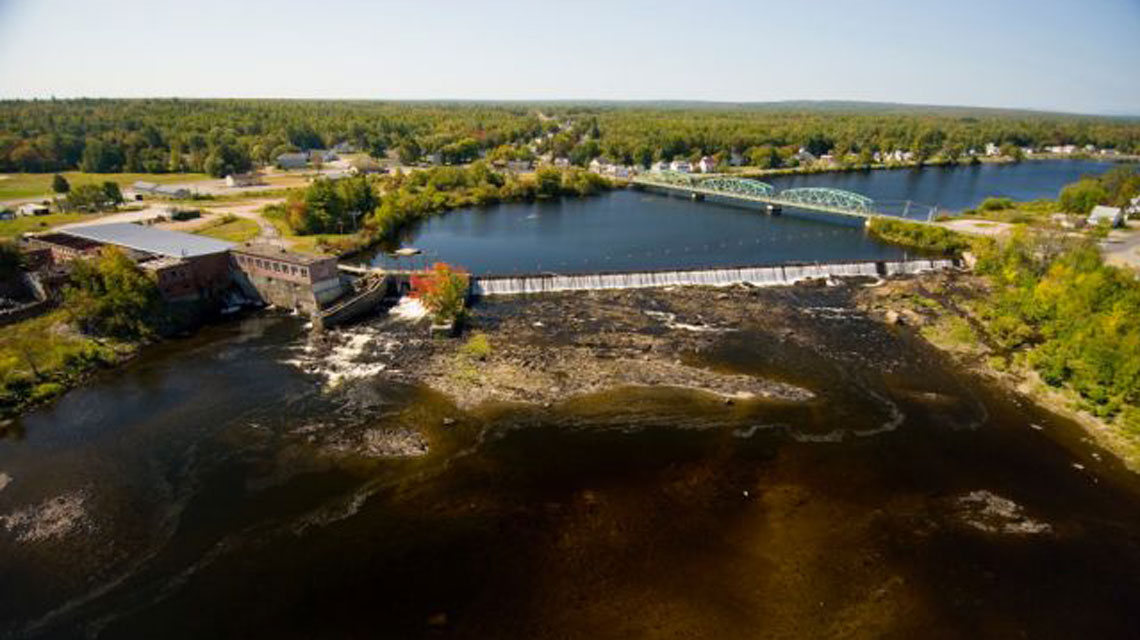
The Howland Dam in Howland, Maine, is the location of a new fish bypass as part of the PRRP. Photo courtesy of New England Boating.
The ecological frame played a major role in the fish passage installed within the Howland dam. Since the early 1900s, fish have not been able to reach their historic spawning grounds without being pulled from the water and loaded onto trucks and transported to their spawning grounds, which traumatizes and sometimes kills them in the process. The spearhead of the campaign for this fish passage was the restoration of the sturgeon population. Sturgeon is an ancient fish species and has been native to the area for hundreds of years. Over the last 100 or so years, their population has become so damaged such that they are now listed on the endangered species list.
The article “After more than a century, endangered shortnose sturgeon find historic habitat post dam removal” on the restoration of sturgeon frames the situation in terms of ecology, such as “Overharvest and loss of suitable habitat due to dams and pollution led to declines in shortnose sturgeon populations and a listing as endangered under the U.S. Endangered Species Act (ESA) in 1967” (Wynne, Kahl, & Goebel, 2015). The writers used the word “overharvest” in a negative sense, and framed the sturgeon in terms of dwindling population. The writer then turned the attention of the readers to what should be done to increase the fish populations: “In addition to dam removals, construction of a nature-like fish bypass at the Howland Dam in 2015 significantly improves habitat access for the remaining nine species of sea-run fish native to the Penobscot, including Atlantic salmon and river herring” (Wynne et al., 2015). The writers framed the article in a positive ecological sense, suggesting that removing or at least modifying the Howland Dam would have a positive impact on the future growth and restoration of these native fish populations. This frame is a contributor to the ongoing campaign that is the Penobscot River Restoration Project, and it also is helping the process along in a major way, being one of the last standing dams on the Penobscot. It is important that this Dam is framed in the right way to garner community support.
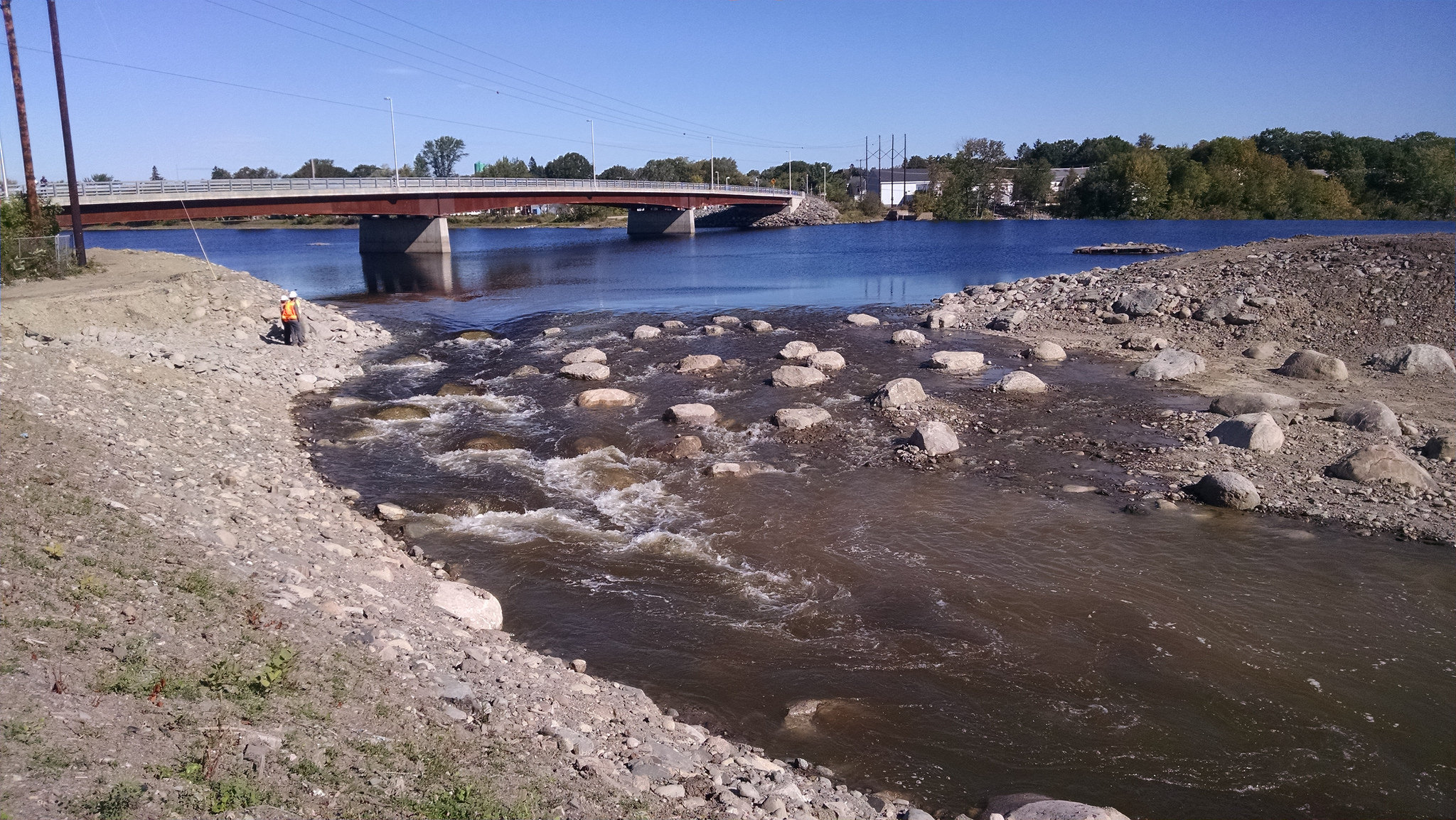
The Howland fish bypass under construction. Photo courtesy of the U.S. Fish & Wildlife Service.
Dam Site #2: Milford Dam
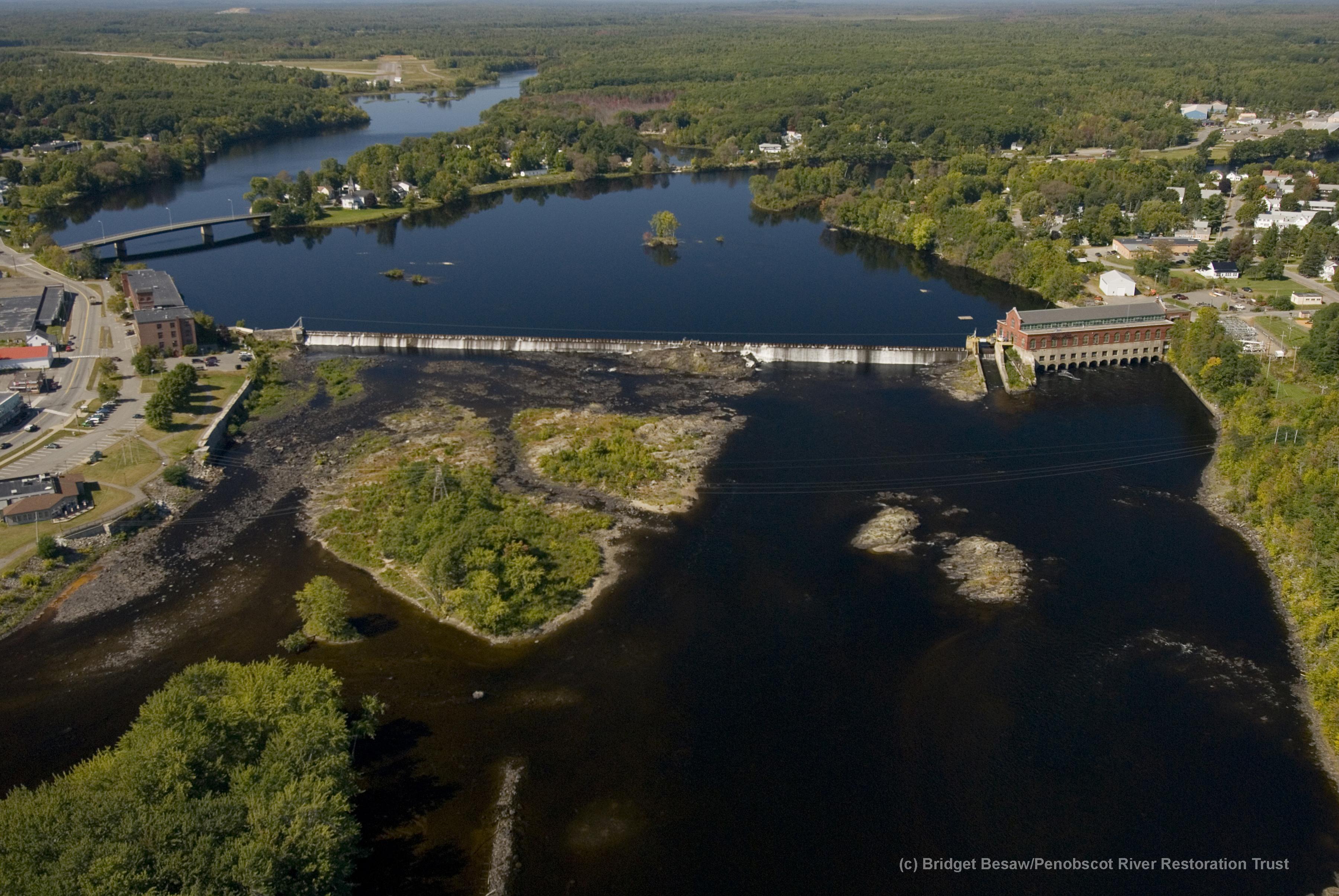
The dam between Old Town and Milford is the site of an updated fish lift, which will transport sea-run fish further upriver. Photo courtesy of the Penobscot River Restoration Trust.
The Milford Dam is one of the few dams that will remain in place, continuing to produce power; but the installed fish elevator will allow fish to pass through the dam. By focusing on the fact that the Milford Dam will produce electricity while allowing fish to pass through, the media frames the fish lift as a solution to the problem that Dams block fish from migrating up and down the river.
News articles frame the fish lift at the Milford Dam as sustainable and economical — more energy is produced at the dam, actually increasing power output and therefore revenue, and the fish will be able to pass through the dam in a sustainable fashion. This frame oversimplifies the issue. Many stories that mention the Milford Dam’s goal of producing electricity while simultaneously allowing fish through sound good and simple, but they ignore the question of whether the fish lift actually works. In his article “Return of the Ghost Fish,” Brandon Keim points out that the effectiveness of the fish elevator is actually still being assessed. He also points to a less than impressive track record. There is still hope, he says, but at least he brings up the point that the work is not done yet, unlike most other mainstream sources who have reported on the issue (Keim, 2013, para. 6). Articles are framed in this way to make sure people understand that electricity will still be produced by the Dam, while easing the fears of fish activists and fishermen who worry about fish populations who try to pass through the dam. But this motive fails to address lingering ecological concerns about the dam.
Dam Site #3: Former Great Works Dam
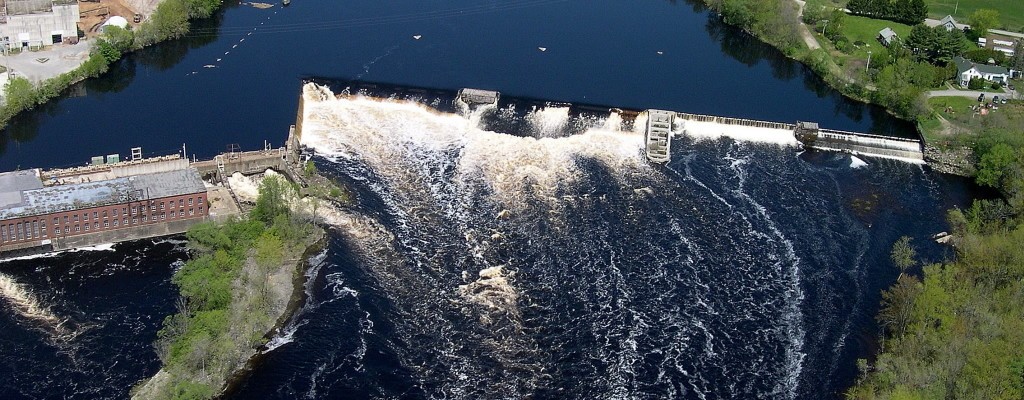
The former Great Works Dam in Old Town, Maine. The site is the location of the rapids where the Penobscot Tribe derived their name. Photo courtesy of the Natural Resources Council of Maine.
The former Great Works site is most often framed culturally as the most important in restoring the traditions of the Penobscot people. According to Banks & Day (2014, p.26), the Penobscot people derive their name from penawapskewi, the sounds created by the river flowing over the rocks at the former Great Works site. Under a “bright sky” (Carpenter, 2012, para. 1), the dam was removed in 2012, signifying the “most important conservation project in our 10,000 year history on this great river that we share a name with, and that has provided for our very existence,” as tribal chief, Kirk Francis, said at its removal (Carpenter, 2012). The Great Works site is portrayed as not only a barrier to fish, but a barrier to the advancement of Penobscot culture. As the dam was removed, an elder moved a “smudge of sage tobacco and sweet grass over the crowd,” much like a blessing to return the heritage to not only the Penobscot, but all people.
The Great Works site is not only framed as a restoration of Penobscot culture, but of recreational culture as well. In addition to returning the namesake rapids of the Penobscot people, “the revived rapids at the former Great Works site were a major reason the Penobscot was chosen to host this year’s whitewater paddling championships” (Miller, 2015). The word “revival” is important in the discussion of the former Great Works dam. Its destruction led to the revival of not only Penobscot culture but a renewed vitality of the Maine economy and, ecologically, an environmental restoration. According to Banks and Day (2014), “The paddling, fishing, and other recreational opportunities that will come from a freer-flowing river will be a boon for paddle-sport outfitters, river guides, and many local businesses, and benefit the entire state of Maine.” The “revived rapids” were a cultural component of Penobscot history, but also cultural with a “revived” outdoors industry in the state. Ecologically, the rapids have been mostly restored; culturally, both Penobscot and commercial interests are restored.
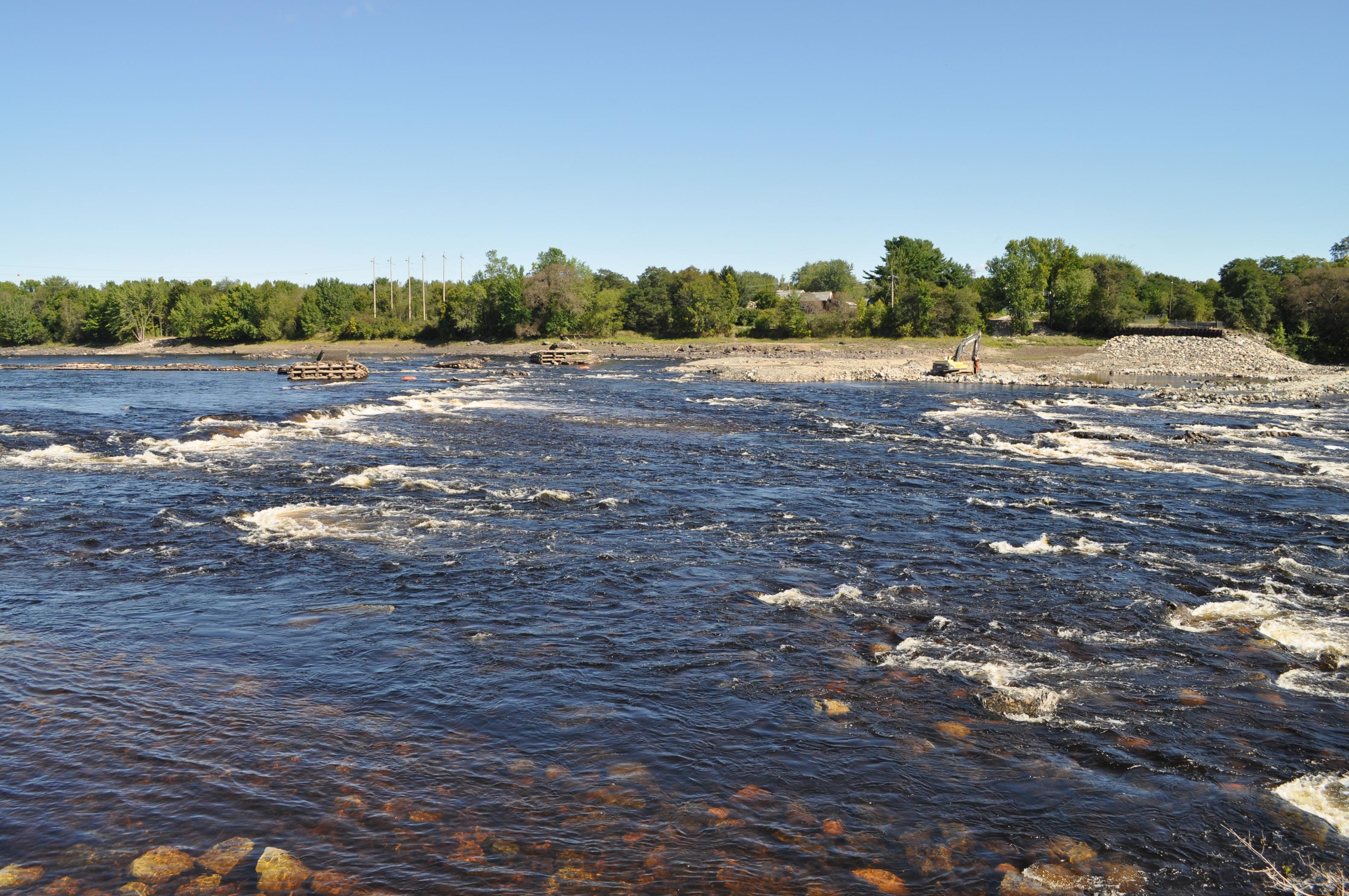
The Great Works site after dam removal. Photo courtesy of the Penobscot River Restoration Trust.
The frames surrounding the former Great Works Dam portray the dam’s removal as positive in restoring several types of cultural and ecological facets to the Penobscot People and their namesake river. Because the Penobscot derived their name from the location of the former dam, positively framing the dam’s removal in a cultural sense aims to persuade the public that dam removal is also a positive thing — in removing the dam, we have restored an entire peoples’ cultural heritage. Ultimately, continued framing in this way would serve to illustrate to the public the need to remove more dams in the future.
The cultural frame does nothing to complicate the impact of the Penobscot River Restoration Project; in fact, it enhances the message that restoration of the river is culturally important. The frame suggests that by renewing migrating salmon populations, the river restoration can restore the heritage of the Penobscot People. It is important to look outside the frame, however: Does a focus on cultural framing ignore the other aspects of the project (ecology and other sciences)?
Dam Site #4: Veazie Dam
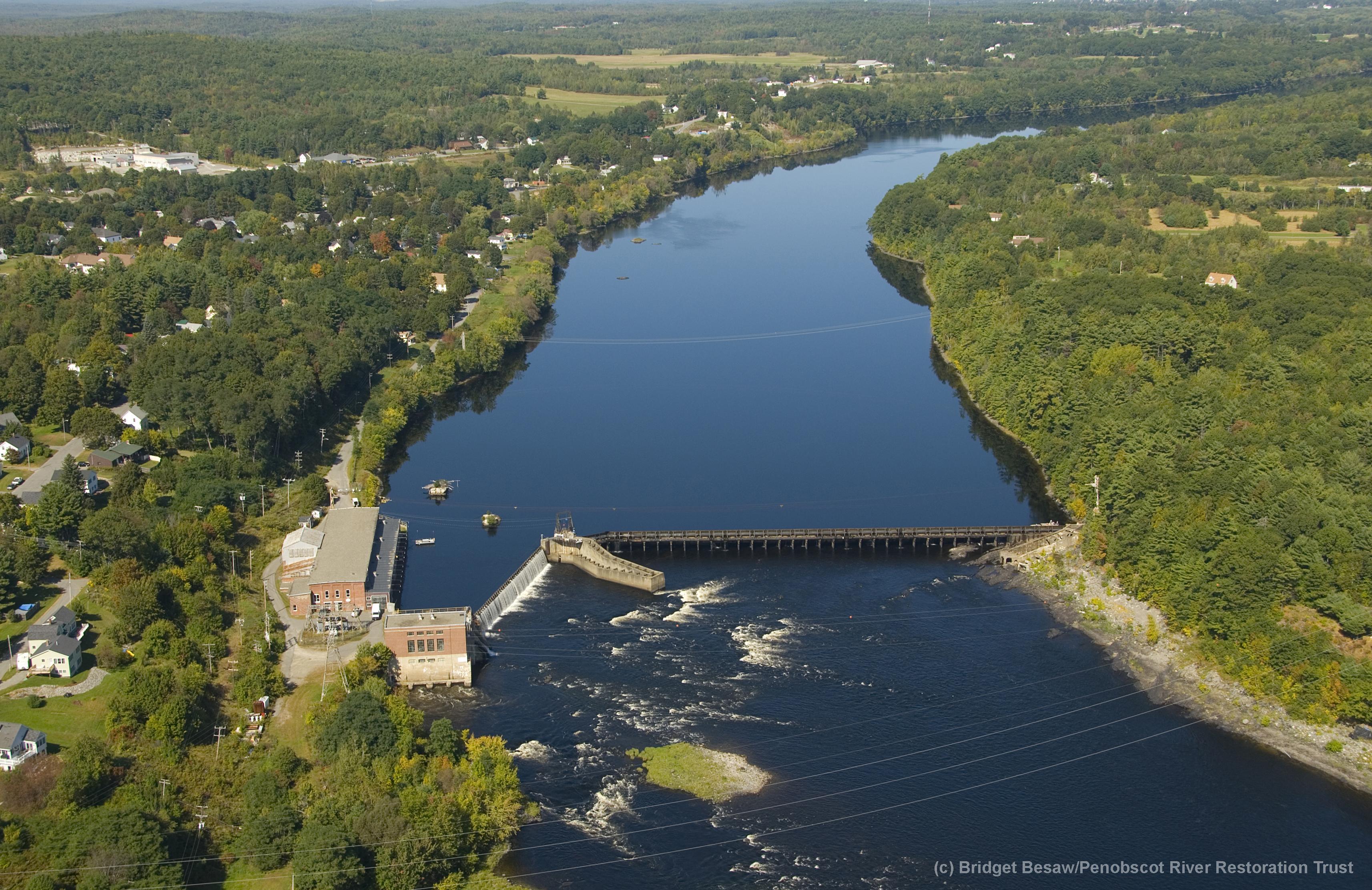
The Veazie Dam prior to removal. Photo courtesy of the Penobscot River Restoration Trust.
Veazie Dam is framed in several ways, all of which are used to explain or understand the Penobscot Restoration Project. One major frame that is present in the Veazie Dam removal is collaboration. Many people were involved in order to give this project the greatest outcome. The Penobscot Indian Nation was involved to provide the cultural restoration, making sure their community and those surrounding understood its significance, bringing the river back to when it was at its greatest. The U.S. Fisheries and Wildlife Services were involved with the ecological restoration of the fish species within the river as well as the rivers flow through Maine. As well as restoring the wildlife, this dam removal was able to restore recreation and create economic benefit for the community providing runs for canoe and kayak races down the river. “The 2014 Bashebz Run Canoe and Kayak Race brought 36 racing boats out on this 15.5 mile challenging course from Indian Island to the Brewer riverfront” mentioned as one of the many successes in the Veazie site updates (Veazie Site Updates, n.d.). All of these frames worked together in a total collaboration to make the Veazie dam removal a positive project that benefited many opposed providing for some and displacing others. The frame was based off of the teamwork of all of these parts to finish this project and make it as successful as possible.
Many of the frames used for this project were both dramatic and positive. In many ways, the numerous triumphs coming from different fronts was what made this project so easily accepted by media and the public. It seemed to be benefiting everyone with little to no downside. As shared by Scott Hill, the President of Black Bear Hydro, “‘Black Bear is excited to develop new hydropower in the Penobscot watershed as part of the Penobscot Project’s new balance between energy production and fisheries,’” There was a common goal here, where everyone worked together (Toensing, 2013). The project was able to gain a lot of momentum and leap many hurdles working to a very large goal. At times it seemed like the project was almost framed too positively, such that that it was seen as more successful than it actually was. It seemed difficult at times to keep control of all the positive releases, making the frames almost too big for the project itself. This can complicate the message and create misunderstanding within a project and how it is communicated. In the case of the Veazie Dam removal, this provided a great platform for the project but potentially gave audiences the wrong idea. This may not have hurt Penobscot Restoration Project in the short term, but in the long run it could muddy the message.
Visualizing the Frames
The following interactive map allows you, the reader, to take a ride downstream and experience the Penobscot River watershed without leaving your seat. Starting at Howland and ending at Veazie, each marker denotes one of the four dams discussed in our analysis; with each is a summary, but videos and photos tie the environment together.
Conclusions
It can be said that “the media can play a potentially powerful role in setting the agenda for public concern about and awareness of environmental issues” (Hansen, 2011, p. 18; Soroka, 2002 as cited in Cox and Pezzullo, 2016, p.106). However, It is important that when discussing these frames they are not to be taken without critique. It is one thing to consider how issues are framed, but it is just as important to consider how they are not framed. In other words: what lies outside the frame?
One of the most prominent aspects of this project was the realization most articles either positively framed the restoration or used negative frames to send a positive message of restoration. Evaluating this, we return to the guiding questions:
- Do the frames aid restoration or do the frames complicate the message, making it difficult to understand?
- What are the motives behind the frames and how does the public view them?
- Is the framing helping or hurting the restoration project?
Looking through a service learning perspective, the following conclusions can be drawn:
- Positive framing can have a negative impact on the restoration project by displaying a one-sided argument to the general public. Because news organizations have such strong influence in the public sphere (often times more than scientific organizations), it is important that all sides of a story are presented. In the case of the Penobscot River Restoration Project, this is not the case.
- This research is important for news organizations. It shows that the quality of reporting, although quality in writing, is not accurately portraying the story of the Penobscot River Restoration Project. Journalists use these specific frames in positive light to gain traction and garner public support for the massive project, but in doing so often times neglect facts-based or scientific information, instead often opting to focus on the more “salient” concerns: restoration of culture, restoration of economy, and restoration of ecology. It is important that the restoration project be evaluated from all sides as it moves to its final phases of completion.
References
- Banks, J., & Day, L. (2014). Collaborating to Revitalize Human and Wildlife Communities Along the Penobscot. Communities & Banking, 32-32.
- Carpenter, M. (2012, June 11). Dam Removal to Help Restore Spawning Grounds. The New York Times. Retrieved December 11, 2015, from http://www.nytimes.com/2012/06/12/us/maine-dam-removal-a-start-to-restoring-spawning-grounds.html
- Clampitt, P., Berk, L., & Williams, M. (2002). Leaders as Strategic Communicators. Ivey Business Journal. Retrieved December 7, 2015, from http://iveybusinessjournal.com/publication/leaders-as-strategic-communicators/
- Cox, J., & Pezzullo, P. (2016). News Media and Environmental Journalism (Old and New). In Environmental Communication and the Public Sphere (4th ed.). SAGE.
- Goffman, E. (1986). Frame Analysis : An Essay on the Organization of Experience. Boston, Mass.: Northeastern University Press.
- Hansen, A. (2010). Environment, media and communication. London: Routledge.
- Keim, B. (2013, November 12). Return of the Ghost Fish. Retrieved December 11, 2015, from http://archive.onearth.org/articles/2013/11/can-civilization-and-salmon-coexist-dam-good-question
- Laughey, D. (2007). Key Themes in Media Theory (1st ed., p. 248). Maidenhead: Open University Press.
- Lazarsfeld, P. F. & Merton, R. K. (2004). Mass Communication, Popular Taste, and Organized Social Action, In: John Durham Peters and Peter Simonson (eds), Mass Communication and American Social Thought: Key Texts, 1919-1968. Lanham, MD: Rowman & Littlefield, 230–241.
- Miller, K. (2015, September 27). Two years after dams’ removal, Penobscot River flourishes. Portland Press Herald. Retrieved December 11, 2015, from http://www.pressherald.com/2015/09/27/a-river-revived-the-penobscot-river-two-years-after-dams-removal/
- The Penobscot’s song. (2012, June 16). Retrieved December 11, 2015.
- Toensing, G. (2013, July 23). Ceremony – and Eagles – Mark Beginning of Veazie Dam Removal am Removal. Retrieved December 11, 2015.
- Veazie Site Updates. (n.d.). Retrieved December 11, 2015, from http://www.penobscotriver.org/content/5012/veazie-dam-removal/
- Wynne, M., Kahl, E., & Goebel, J. (2015, November 16). After more than a century, endangered shortnose sturgeon find historic habitat post dam removal. Retrieved December 11, 2015, from https://umaine.edu/news/blog/2015/11/16/after-more-than-a-century-endangered-shortnose-sturgeon-find-historic-habitat-post-dam-removal/
Framing Rivers and Dams
Siera Tibbetts, David Glasberg, Krsna Jevons, & Ryan Vail
The River
The Dam
Scholars' Statement
Framing is one of the most powerful tools the media can use. There are so many ways that one event can be seen by the use of frames. This involves encoded messages that the creators of the video wanted to show and the the decoded messages that the viewer gets from the video. There are also many ways that the news sources are forced to limit news based on their options. Newsworthiness determines if the story is worth reporting.
In our project we focused on showing different frames that media could use by juxtaposing two videos. These videos show opposite viewpoints on the same issue, the Stillwater dam. The first frame is preservationist so we used an emphasis on the history of the river. The second frame is focusing on the industry so we emphasised innovation and development. To show how the frames are what makes the difference we used many of the same clips in our separate videos. We also had the opportunity to talk to the project manager at the Stillwater dam restoration project. The community relations manager gave us information about how the dam produces 2.2 megawatts of power and that the restoration project provides 10 jobs.
Through working on this project we learned many things about how media works. We learned how to apply many of the subjects that we talked about in class to the real world. We even got to apply the laws that we learned when we talked to the company working on the restoration.
DeFraming
Tristan Underwood, Michael Sergio, Chris Quereux, & Hannah Maddix
Overview
Framing is a common approach by news media to cast news events in ways that connect to values and interests in the audience. Furthermore, news framing is a major area of research within communication as scholars study how news headlines, multimedia elements, and writing together construct a message around a story.
In this video, we overview the emergence of news framing research and apply this research to news stories focused on the Penobscot River Restoration project.
Social Justice for Tribal Communities
Kat O'Toole
Overview
In this video, I explore the history of the Penobscot Nation as it relates to the Stillwater and Penobscot river system. Weaving together video, photos, and text from various media focused on the Penobscot Nation and their river, I develop a story about tribal communities seeking social justice within this key environmental system.
The Penobscot Nation
Daniel Fournier, Ashley Petet, & Audrey Raymond
Overview
In order to describe the historical underpinnings of current efforts to ensure social and environmental justice for tribal communities connected to the Penobscot River, we developed this narrated video. We chart the ongoing process of environmental justice that continues through joint striving between the Penobscot Nation and key partners.
The Penobscot Nation
Linda Dudley, Mykayla Hagaman, Kiana Burke, & Steven Brown-White
How do the members of the Tribe communicate about the Penobscot River Restoration? In their words, what does this project mean for them?
by Steven Brown-White
When the Penobscot river became a sacrifice zone for the use of hydropower, the members of the Penobscot Tribe were devastated and knew they had to communicate about the river by advocating for their relationship with it, as well as drawing on their deep history of using the river, dating all the way back to the tribe’s origin. The Penobscot people were able to come to a compromise with PPL-Maine, a group that purchased several dams in Maine, and come to a conclusion on how the river could be restored to its previous state, all while maintaining the same amount of hydropower the previous structure produced. The Penobscot River Restoration Trust purchased the Veazie, Great Works and Howland dams. By sharing their story of what the river meant to them to companies that were willing to cooperate with the tribe, they were able to reach a common goal and get a plan in action to return the river to its former state.
What are the Penobscot Tribe's meanings about the river? How do these meanings shape their relationship to the river and motivate their organizing justice?
by Kiana Burke
The Penobscot Tribe has a deep connection to the the Penobscot River. They embrace their roots through the river itself. The name Penobscot comes from Panawahpskek and means “the place where the rocks open out.” This name demonstrates the importance that the river has for the tribe. The Penobscots live on a reservation that belongs to them, and the Penobscot Nation has its own government, laws, police, and services. The river is just one part of what brings them together to form the community that they are trying so hard to preserve. The river is a source of food for the tribal members. Not only do they hunt but they utilize the resources from the river. However, due to pollution the Penobscot river is suffering a great deal. This affects the Penobscot tribe members directly so it is very important to try to preserve it.
What is the history of environmental racism towards the Penobscot Tribe? How did the Tribe resist this racism and seek justice for themselves?
by Linda Dudley
Throughout history, there have always been conflicts between the Native Americans of this land and the European settlers that wished to take it for their own. We all know that since the time that we arrived in this country we wished to manipulate in the way that best suits us, regardless of the people who were already here. There were many countries that wished to take some of this land for themselves. To control the resources that it held would mean that they would have power over their rivals, and this is no different for the Native people that were/are here in Maine. During all of the conflict it is almost as though these people were being overlooked. This is because their land was traded around and taken over as we developed the area.
We began to use this land as though it belonged solely to us. The things that the Europeans began to use the land for were limiting the abilities of the Native people to use it, and the rivers, in the ways that they needed to sustain themselves not only physically, but also in a cultural/emotional way. For example, the river would become clogged when it was being used for log runs. Essentially we were cutting these people off from their livelihood and there wasn’t much that they could do about it, because in many cases their rights and powers had been greatly diminished. Later on it wouldn’t be clogged logs, blocking their navigation of the river and damaging the fish populations, but it would be stopped by dams in various places along the entirety of the river.
Though the log drives ended in the mid 1970s because of the pollution that they were causing in the river, for over a hundred years areas of the Penobscot were dealing with the effects of the log runs and from dams. The first dam was constructed at the Eddington Bend in 1834. After the dam in Bangor was built in 1875, and as more and more dams were built along the river, the salmon runs started to gradually decrease and in 1954, stopped completely. With all of these dams in place, and all of the logs moving through, the river was like a cesspool. Looking at the river as a whole through a pragmatic view makes one realize how much was taken away from these people. Their “sacred circle” was dying, and there wasn’t much that they could do to stop it.
The Penobscot tribe, and the Wabanaki people as a whole, tried to resist the European influence on them and their land by forming the Wabanaki Confederacy in 1701. This was to basically unite the tribes against the expanding English colonists, not to necessarily fight against the environmental racism that would be occurring. The purpose of movements such as this one is to regain the usage of the waters and lands that their ancestors once used to sustain themselves, and their people. In addition to that, there have also been a variety of movements and efforts to help the sea-run salmon return to their ancestral spawning grounds, not only to give people back their historical food source, but also to give them back an important part of their culture that we have all but eliminated.
In what ways is the Penobscot River Restoration Project a realization of their environmental and social justice movement? What work still needs to be done for justice and sustainability?
by Mykayla Hagaman
So how has the Penobscot River Restoration Project brought social justice to the Penobscot tribes? Since the project was started, the Veazie Dam and the Great Works Dam have both been removed, the Howland dam was bypassed to allow fish to swim around it, four other dams have had improvements made to their fish passages, and six dams have been made more energy efficient. All this has given salmon, and other fish, access to an extra 1,000 miles of the Penobscot River. This has resulted in the return of shad, an endangered species of fish. From 1940 – 2012, there were a total of 13 shad that made it to the Veazie Dam; after its removal, there were 805 shad that made it to the Milford Dam in 2014 (Banks, 2015). The work done on dams has given the Native Americans back some of their heritage that was lost. The Penobscot River Restoration Project has helped restore sea run fish to their native land, improve water quality, and expand recreational activities such as fishing and boating (Banks, 2015). These actions have helped the Penobscot tribes gain some of the equality that had been withheld from them. Allowing the tribe to work in the project also ensures that their voice is heard and is a restoration of social justice. This project has been a prime example of collaboration where companies put their differences aside to work for the greater good. What made this project work was its multiple stakeholders, including the Penobscot Nation. The Penobscot Nation created this project in order to utilize their right to comment, and this allows the project to restore the Native Americans’ rights as people - it gives them a voice. However, there is still much to be done to restore the balance of the Sacred Circle. Even now, lawsuits are being waged over the ownership of the Penobscot River. This lawsuit has made it all the way to the Supreme Court of Maine where the state claims that they own the river and that the Native Americans own the islands. However, the Penobscot tribe claims that they own the river from bank to bank. What the court decides will set a major precedent, especially if the rights are given to the tribes (Peet, 2015). This demonstrates how there are still disputes over justice to be fought, and equality will not be won until the tribes are treated with respect and fairness.
References
- Banks, J. (2015). Guest Lecture for Environmental Communications [powerpoint slides]. In-class lecture.
- Belanger, E. (2015, May 23). Flotilla throws support behind Penobscot Nation’s ancestral fishing and hunting rights. Bangor Daily News. Retrieved from http://bangordailynews.com/2015/05/23/news/bangor/flotilla-throws-support-behind-penobscot-nations-ancestral-fishing-and-hunting-rights/
- Learn About The History and Preservation Of The Penobscot River Maine. (n.d.). Retrieved December 11, 2015, from http://www.maineatlanticsalmonmuseum.org/history-of-the-penobscot-river/
- Native American Culture Timeline | MPBN's "HOME: The Story of Maine". (n.d.). Retrieved from http://www.mpbn.net/homestom/timelines/natamtimeline.html
- Peet, K. (2015). Wildlife Management with Kirsten Peet, Wildlife Biologist, Penobscot Nation [powerpoint slides]. In-class lecture.
- The Penobscot Nation (2015). Indian Island. Penobscot Indian Nation. Retrieved from http://www.penobscotnation.org/indian-island/category/3?limitstart=0
- Penobscot River Restoration: History, plan and partners for a game-changing restoration. Retrieved from http://www.nature.org/ourinitiatives/regions/northamerica/unitedstates/maine/explore/penobscot-river-restoration-project-detail.xml
- Penobscot River Restoration Project | The River. (n.d.). Retrieved December 11, 2015, from http://www.penobscotriver.org/content/4004/the-river
Visualizing Dams, Rivers, and River Restoration
Stephanie Donoghue, Mairead Clonan, Jared DeWolfe, & Emily Brady
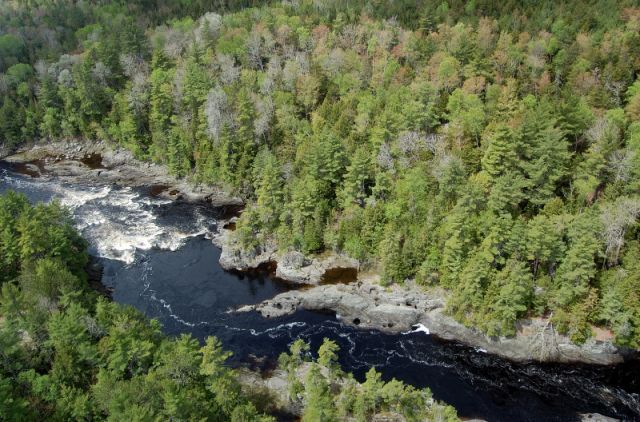
Effectively communicating about dams, rivers, and river restoration can be difficult, but there are many different strategies the Penobscot River Restoration Trust uses to influence and educate the audience. One such strategy is "framing." "We all process information according to how we view the world – every person in this audience is going to take what they read or hear about fish and filter it through mental 'frames'"" (Schmitt, 2015). To use framing, you need to think about who your audience is and think about what will affect the audience most. If you show a picture of a fish nursery to someone who doesn’t really care about fish, it won't be as effective as if you showed this to a fisherman. There are many different approaches to effective visuals in the Penobscot River Restoration project, but I believe this is sort of the basic but most important part to creating effective visuals.
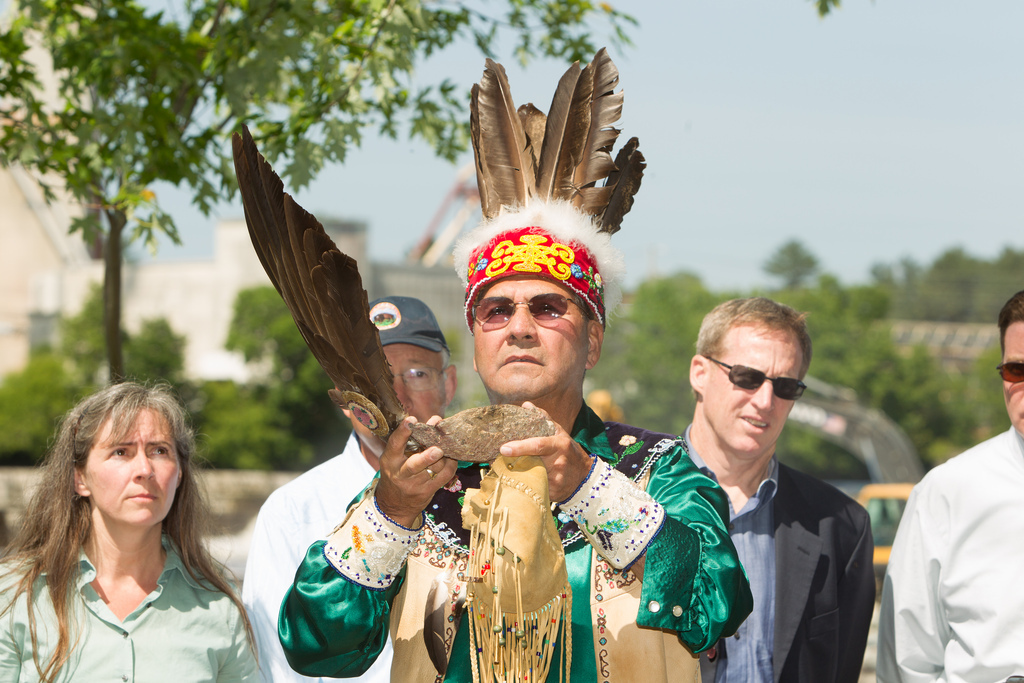
Environmental art, otherwise known as the production or works of art intended to become a part of outdoor environment, plays a role in constructing understanding and action about visualizations about dams, rivers, and river restorations. The image above is of a man named Butch Phillips, and shows him wearing and holding things from his tribe. This is environmental art, and it shows what this tribe did and how they live off of the environment. Butch Phillips showed how environmental art can influence the audience. He did this in the video “Butch Phillips: Restoring the Penobscot River” by talking about his ancestors. Phillips explained about how his ancestors traveled up and down the Penobscot River for many many years. This river was where they got all their necessities for life. They relied heavily on the plentiful fish living in the river for food. Over time, his ancestors began to have a special relationship with the river. However, the loss of their fishing culture was one of the greatest challenges faced on the Penobscot River because of the loss of the sea run fish, caused by the building of the dams.
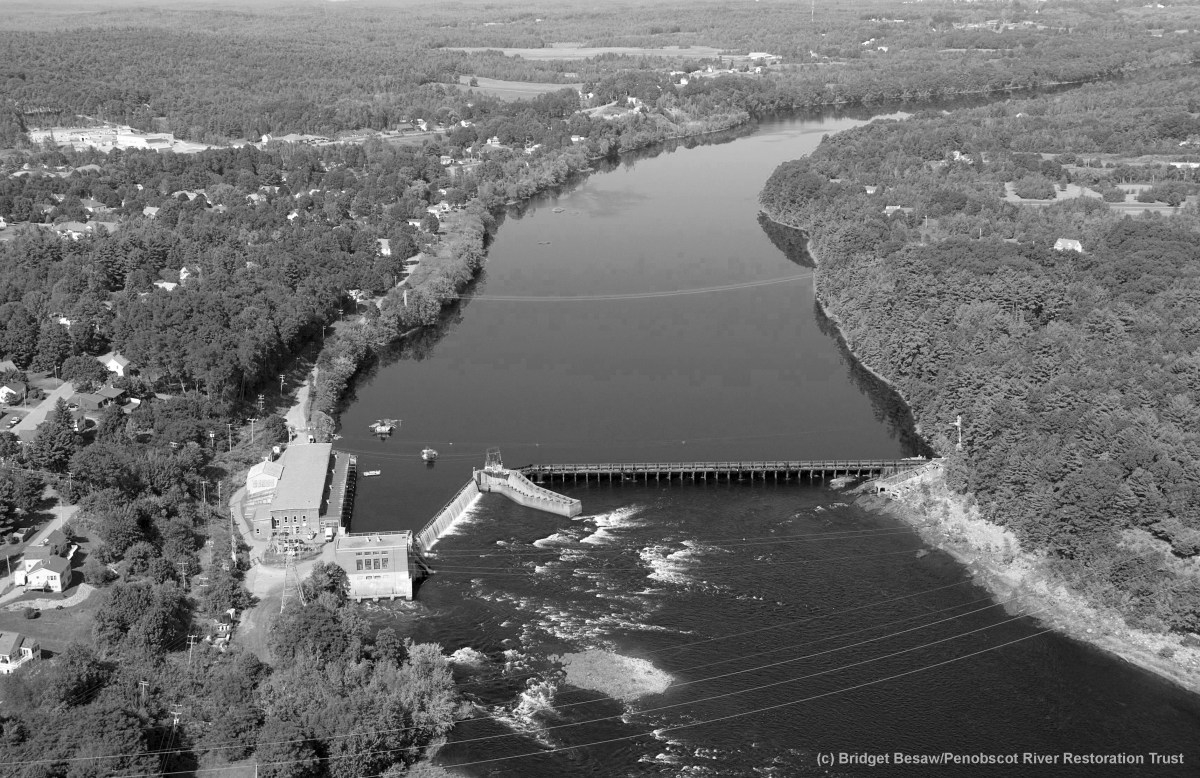
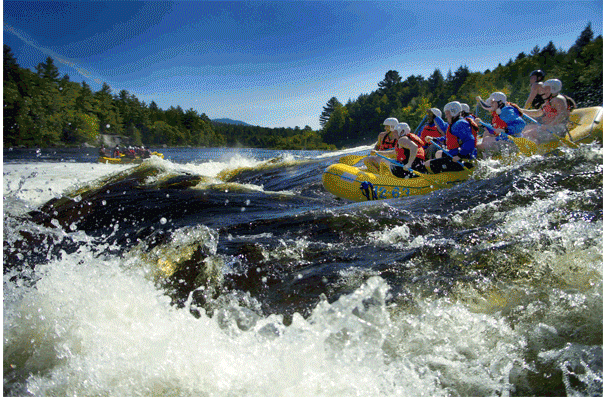
The image on the left shows the Veazie dam when it was still intact. The image is dark and gloomy and it is meant to invoke feelings of sadness, to show the bad effects of dams. The Penobscot River Restoration team would most likely use this image to gain supporters in the effort of removing the dam. Some people may agree with the fact that this image is upsetting, and that dams damage rivers, causing pain to both humans and animals that depend on the river itself. Other people may view this image as good; that it’s showing a source of power production and a source of protection for the river's inhabitants.
The image on the right was taken after the Penobscot River Restoration project took place. This image is full of vibrant colors in order to invoke feelings of happiness. This image shows the joy that the freely flowing river brings people. One might view this image and agree with the fact that the free-flowing river brings happiness into not only people's lives, but also the lives of the animals that depend on the river to live. Another person might view this image completely differently, saying that a free flowing river contributes to the hindering of habitats for both humans and other organisms.
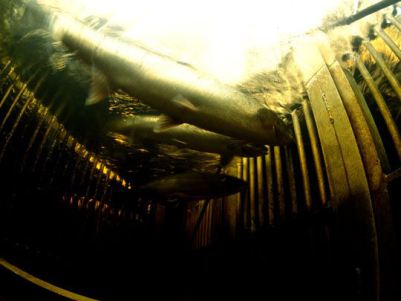
Condensation symbols are some of the most powerful symbols used for effective communication. It’s supposed to connect with your core values, on a more personal level. If the picture is influential or dramatic enough it can be very effective in changing minds. The photo above is a perfect example of a condensation symbol. It depicts a caged King Salmon in the Veazie Dam on the Penobscot river to show us the effects of dams and the harm they are imposing on the fish. The goal of this picture is to motivate people and make them contribute to bettering our rivers and fish.
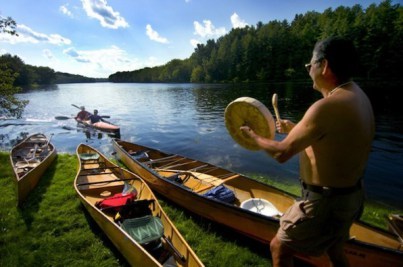
The Penobscot River is a large part of the native community, and changes in the environment have caused the fish and wildlife to leave the river. This made the natives unable to depend on the river, thus making them adapt to a new way of living. The Penobscot Nation is working on a project called the “Penobscot River Restoration Project” and say they will continue their efforts until the water is clean, the fish and wildlife are edible and they can once again live off the river.
Environmental Communication seeks to describe how communication shapes our relationship to the environment and to create more sustainable ways of communicating about, for, and with environments. The Final Project helps us fulfill both of these commitments and to create environmental communication that will live on after the class ends.
References
- A Separate Peace | Publish with Glogster! (n.d.). Retrieved December 9, 2015.
- Butch Phillips: Restoring the Penobscot River. (n.d.). Retrieved December 9, 2015
- Hart, D. (n.d.). Dams, Rivers and Society:Communication Pathways to a Sustainable Future. Lecture.
- Kober, A. (2013, July 22). Removal of Veazie Dam Begins on Maine’s Penobscot River. Retrieved December 9, 2015.
- Penobscot River Restoration Project | Affected Dams. (n.d.). Retrieved December 9, 2015.
- Penobscot River Restoration Project | Fish & Wildlife. (n.d.). Retrieved December 9, 2015.
- Schmitt, C. (n.d.). Framing Fish. Lecture.
- WHITEWATER RAFTING – PENOBSCOT RIVER MAINE. (2010, December 30). Retrieved December 9, 2015.
- Who’s talking about the Penobscot? (2012, June 13). Retrieved December 9, 2015.
Visualizing Dams and Rivers
Cailey Hutchison, Taylor Poissonnier, Sadie Goulet, & Erika Everett
Overview
Dams and rivers are often understood through processes of visualization, which can be studied using communication research approaches to analysis. In this video, we undertake our own analysis of several images involving dams and rivers.
We apply the concept of encoding/decoding to describe how images about dams and rivers serve as visual messages that are "encoded" by producers using their sets of values and perspectives, then "decoded" by viewers using their own, unique sets of values and perspectives.
Visualizing Rivers and Dams
Victoria Brookings, Devin Collins-Ives, Carrie Daigle, Cabrinni Goncalves, & Brandon Sirois
Guiding Questions
- How can we visualize the truth about rivers and dams in a constantly changing environment?
- How can we begin the visualize the current "truth" of rivers and dams when it comes to how much they have changed?
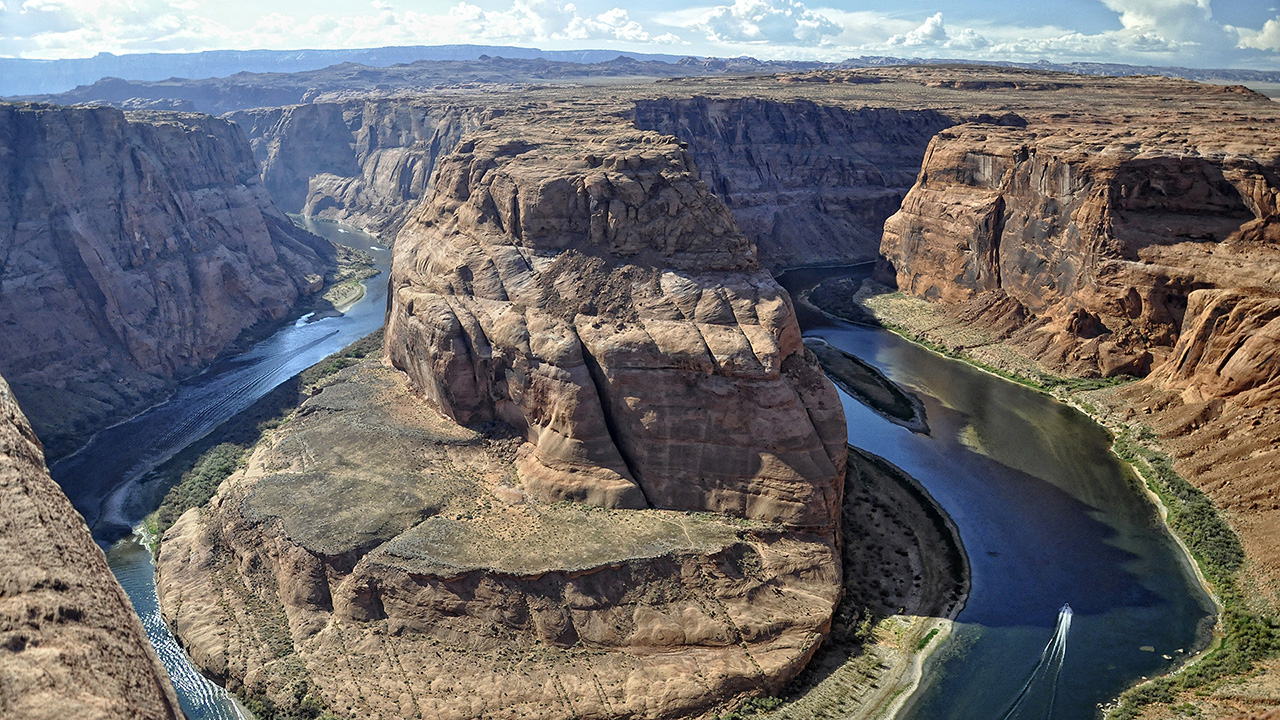
The Colorado River. Image courtesy of Paul Hermans, CC BY-SA 3.0.
The frameworks observed in our analyses of various representations of dams and rivers have been simple in their core message, but complex in their formation and subtleties. There are common themes observable by simply Googling the words “dam” and “river.” More often than not, these ideas were presented with an ecocultural frame. As individuals, there are too many complexities to provide certainties about how we form our responses. However, there are cultural norms that influence and sustain the seemingly binary ideologies that we have found present.
The semiotics of these words and images are formed individually, socially, and culturally. The scope of each of these is qualitatively unknown, however the largest societal formation (the national culture, in this regard) seems to have the biggest influence. Repetition of themes and associations help these ideas become sustainable, beyond our own personal identifications with signs. Rivers are to us what we make them. It is difficult to not view elements of life anthropocentrically. We cannot be the river, we cannot define what a river is, but our associations and definitions help us form explanations for ourselves.
The Environmental Communication Behind Rivers & Dams
It takes several experiences and artifacts to come together to create the framework that exists for a being in a given situation. It starts as early as your first childhood experiences, such as how the first color a baby starts to see is red. This is one of the first things that sets the frame for why we associate the color red with being bad. It’s the first color you see which can be scary if you’re an infant and one day you wake up to find your soft gray walls a terrifyingly bright red. This is why psychologists recommend that parents put very few red objects in a baby's room, avoiding using it for a blanket or wall color. You then go on to fall off your bike for the first time and skin your knee to no end. The blood comes rushing out like a red river, yet another experience to set the framework for why the color represents negativity in a given situation. Of course, we do not fear the color red and come to frame it in other situations as being happy, but that’s an entirely different frame.
The color red is a metaphor for how we look at the rivers and dams. We look at the river with the idea that the calm river that makes a perfect mirror is peaceful when really a river is meant to be free-flowing, wild, and strong. This also opens the door for the idea of multiple truths. The multiple truths behind dams is that not all dams are completely useless and that if they can be re-worked in a way that is beneficial to the environment of the river than they are not a symbol for industrial failure.
We are able to frame the way people see rivers and dams through the use of positive images and negative images. Companies often put out vibrant, powerful images to make the river look like a successful investment. However, sometimes videos can change the framework for such things through dull and depressing images and clips.
The reality of dams and rivers has changed so much throughout the years. These images we get in our head when we initially think of rivers and dams are often so far from the true reality of them. Most of us will picture these beautiful twisting rivers, wrapping themselves along the earth. What we often don’t picture is the pollution, higher temperature, and lower dissolved oxygen readings. These new human-made truths about rivers are seemingly forgotten, overlooked, and devalued when we actually envision a river or dam. We found a really interesting video about the Colorado River titled “I am Red” which does a great job at showcasing this change in the rivers we know and love.
This video is the perfect condensation symbol for rivers and how they are changing through time, due mostly in part to human interaction. The video also reaches the viewers through symbolic action, using a powerful monologue mixed with gripping music to create new understanding about how we see rivers. It makes us conscious of the impact we have had on our rivers. It almost perfectly captures our guiding question of being able to visualize truth through change, by beginning the video with typical visualizations of the beauty and grander of rivers. Then, it slowly shifts to the truth of what has been happening to rivers, the changes they have endured, and the suffering that has been inflicted upon them throughout time.
This transition frames the video with a sense of urgency, especially when it comes to humans changing with the rivers. For us to truly visualize the truth of rivers and dams, we must also change. We have to stop looking at dams like they are dollar signs and stop looking at rivers like we own them. By changing, we will see how the river is just as much a part of our world as we are. The video allows us to witness firsthand what we have done to our rivers, and the preservation and restoration needed in order to maintain them. We can start by understanding the changes rivers have gone through, visualizing them for what they are now, and how we can work to return them to their past glory.
In every decision, there are two sides. On the topic of dams and rivers you will always have people for and against the removal or restoration of local dams. This has caused a major controversy across our nation, putting representatives in important decision-making positions. In the documentary film “Damnation” there is a section that showed a congressman throwing a pro-dam rally where he was introducing a bill that would prohibit federal funding to be used for dam removal or the study of dam removal. Locals are feeling threatened about the removal of dams because it is a source of power and jobs. The same goes for the other side of this controversy. We see the Pacific salmon population being greatly affected by the millions of dams in many parts of the country. One example is the dam removal on the Elwha River in Washington. The Elwha was historically known for holding the most abundant runs of Pacific salmon, which supported the Lower Elwha Klallam Tribe. By 1914 the Elwha dam restricted salmon to the lowest 8 km of the river, causing the salmon population to plummet. The power from this dam went to a local paper mill (Brewitt, pg. 1).
Just like with any subject, politics may cause you to view a topic in many ways. This is why the politics of dams are very influential with the way dams and rivers are visualized. The pro-dam side visualizes dams and rivers as a source of power and jobs for the surrounding local area. The dam removal side visualizes rivers as an important part of nature, and put the flow of the salmon and the history of local tribes above desires for dam-produced power. Having dams and rivers become an extremely relevant and important topic in politics is positive to the cause because it is getting the discussion out there. People are joining sides and understanding the importance of dam removal and restoration through the visualization expressed by politicians, tribe members and locals in the community.
Critical Terms
- Advocacy: Persuasion or argument in support of a cause, policy, data, or set of values.
- Aesthetics: The role of art or taste. Applied aesthetics of popular culture include but are not limited to the position of the camera, the use of light, the role of sound, design of costume and sets, the pace of a moving picture, and the application of special effects.
- Affordances: Drawing on Jerome Gibson’s classic The Ecological Approach to Visual Perception, affordances describe what are enabled by various media and what are not.
- Antagonism: Recognition of the limit of an idea, a widely shared viewpoint, or an ideology that allows an opposing idea or belief system to voiced.
- Attitude-behavior gap: Although individuals may have favorable attitudes or beliefs about environmental issues, they may not take any action; their behaviors, therefore, is disconnected from their attitudes.
- Circuit of culture: A flexible framework that reminds us of three characteristics of media: (1) culture always is changing and moving as part of broader networks or contexts; (2) to study it, one must choose which elements will or will not be the focus of one’s analysis: and people involved may or may not be involved in more than one element.
- Climate: Refers to average atmosphere changes over a long period of time.
- Communication: The symbolic mode of interaction that we use in constructing environmental problems and in negotiating society’s different responses to them.
- Condensation Symbol: Graber (1976) defined a condensation symbol as a word or phrase that “stirs vivid impressions involving the listener’s most basic values.” (p. 289); political scientist Murray Edelman stressed the ability of such symbols to “condense into one symbolic event or sign” powerful emotions, memories, or anxieties.
- Data visualization: Illustrates numerical data through an image.
- Environmental communication: The pragmatic and constitutive vehicle for our understanding of the environment as well as our relationships to the natural world; the symbolic medium that we use in constructing environmental problems and in negotiating society's different responses to them.
- Framing: First defined by Erving Goffman to refer to the cognitive maps or patterns of interpretation that people use to organize their understanding of reality.
- Life cycle assessment (LCA): A way of studying how a product’s “life” develops from cradle to grave. A LCA might include raw material extraction, production, distribution, use, and disposal.
- Mainstreaming: An alleged affect in consistent viewers of media whereby differences are narrowed toward cultural norms represented in media programs.
- Preservation: The movement to protect from harm and to maintain certain places as wilderness.
- Rhetoric: The faculty (power) of discovering the available means of persuasion in the particular case.
- Symbolic Action: The property of language and other act to do something as well as literally to say something; to create meaning and orient us consciously to the world.
- Transcendentalism: Belief that a correspondence exists between a higher realm of spiritual truth and a lower one of material objects, including nature.
- Utilitarianism: Theory that the aim of action should be the greatest good for the greatest number.
- Viral media: A metaphor that suggests how communication spreads digitally in random patterns and exponentially.
- Visual rhetoric: Visual images function both pragmatically- to persuade- and constitutively, to construct or challenge a particular “seeing” of nature or what constitutes an “environmental problem.”
- Witnessing: Traditionally defined as an act of hearing and seeing oral and written evidence through firsthand experience.
References
- Aging And Underfunded: America's Dam Safety Problem, In 4 Charts. NPR. NPR, n.d. Web. 09 Dec. 2015.
- Colorado River - I Am Red. YouTube. YouTube, n.d. Web. 09 Dec. 2015.
- Cox, R., & Pezzullo, P. (2016). The Environment in/of Visual and Popular Culture. In Environmental Communication (4th ed., pp. 69-88). Los Angeles, London, Washington DC, New Dehli, Singapore, Boston: Sage Publications.
- From Frames to Resonance Machines: The Neuropolitics of Environmental Communication. Taylor & Francis. N.p., n.d. Web. 09 Dec. 2015
- Mega-‐Coalitions: Dam Removal Politics on the Elwha River, Washington, USA (n.d.): n. pag. Web
The Dam Point: Science and Risk Communication
Lauren Magnuson, Gabby Smith, Caroline Verrill, & Ariana Portante
Introduction
The Penobscot River Restoration Project is one of the largest and most ambitious river restoration projects in our nation’s history. It is working to undo centuries of damage caused by dams and river pollution. The removal of two dams (The Great Works Dam in 2012 and Veazie Dam in 2013) improves access to over 1,000 miles of habitat for species of fish including Atlantic salmon, shortnose sturgeon, American shad, alewife, and other sea-run fish species. The Penobscot River Restoration Trust is still working to restore the Penobscot River for the benefit of both the community and the environment.
Science and risk communication refers to the way we communicate about the environment and public health. The public engagement in decisions about dams must keep in mind the potential impacts on the environment and humans in regards to scientific evidence and communication. While it can be the subject of controversy, science is fundamental for communicating the environmental decision-making process. Scientific communication is pragmatic in that the information being shared by informed individuals helps to shape the public's decision-making around environmental issues. Thus it is important for scientists to be a part of this process because they can encourage knowledgeable decision-making.
Scientific Studies
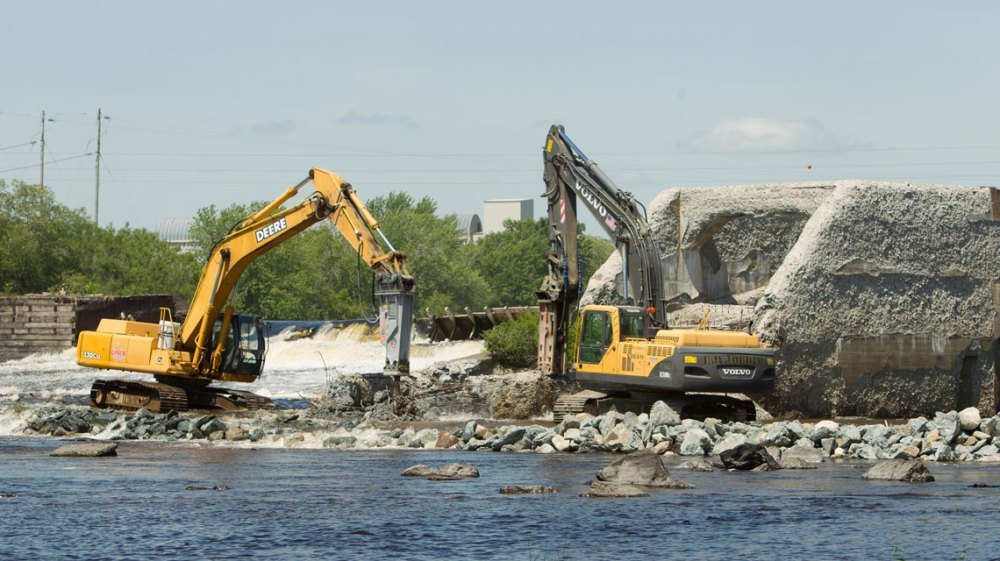
According to scientific studies, what are the different types of impacts of dams and dam removal? How does this science inform decision-making about potential options?
The two main classifications of environmental impacts of dams are dam creation and ongoing effects. By 1986, a total of 782 dams had been built (GIS Data Catalog 2006). These dams collected power from their rivers. They also increased the safety along rivers from flood season. However, dams have intruded on the natural flow of rivers, and have caused ecological harm through sedimentation, erosion, and pollution. Dams also greatly effect fish migrations.
The most noteworthy concern within these interconnected environmental issues is that dams tend to ruin the river ecosystems, segregating populations of species living up and downstream of the dam and cutting off migration. Almost all dams reduce the risk of uncontrolled flooding, but because of this they isolate the river from its floodplain. The removal of flooding's beneficial effects may be the most ecologically damaging impact of a dam. This division of river ecosystems has unquestionably resulted in an immense decrease in the number of species in not only the Penobscot River, but in the world.
In the article "River trust to buy dams; On Penobscot; Three sites key to group’s fish conservation plan," Kevin Miller writes "The plan would reopen nearly 1,000 miles of habitat in the Penobscot watershed for Atlantic salmon, American shad, river herring and other sea-run fish. A resurgence of those species, in turn, is expected to help restore wider ecological balance by providing forage fish for eagles, cod and other predators." The image below demonstrates the impact dams have had on the Penobscot River, including extensive damage to its ecosystem. The plan to restore the river will help extraordinarily in repairing the damage that was done over the past 100 years.
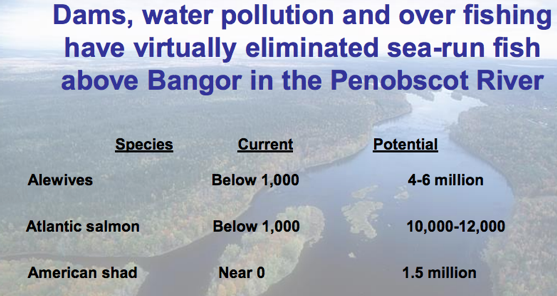
Now, because of the impact these dams have had, alewive fish are now at .016% of their potential in the river; and American shad even less. Today, more than 60 species found in Maine are listed as either threatened or endangered under either ESA or MESA (Maine Department of Inland Fisheries and Wildlife 2007). In June 2009, the NOAA Fisheries Service and the U.S. Fish and Wildlife Service stretched protection to Atlantic salmon in the Penobscot, Kennebec, and Androscoggin Rivers (NOAA 2009). This was a huge step in the right direction in communicating the issues in the Penobscot River. These organizations and departments have scientific legitimacy because their contributors have the proper training and proper experience to put out statistics and make decisions for the dams based on their scientific findings.
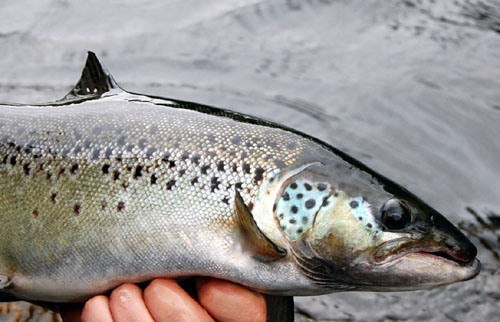
Risks
What do scientists who have been involved with the Penobscot River Restoration Project say about its importance and the potential risks or tradeoffs of dam-related decision-making?
“When it is all said and done, it will be the largest river restoration project in the country,” said Susan Wells, the national coordinator for the U.S. Fish and Wildlife Service’s fish passage program. “The important thing about the Penobscot project is that it takes a landscape approach to river restoration.” John Banks, Director of the Penobscot Nation Department of Natural Resources, delivered a lecture to our class on November 4th and explained how the Penobscot River Restoration Project has been looked to for guidance from scientists all around the country and world. Many who wish to remove and restore dams as well are following this project for similar strategies. The project is so important because it is finding a way to focus on the needs of both the environment and the people by maintaining hydropower and fisheries. It is a landmark project with great success and support.
David Hart, Director of the Senator George J. Mitchell Center, explained both the pros and cons of dams in his lecture to our class on September 16th. Some advantages of having dams are they generate hydroelectricity, support irrigation, and create recreational opportunities. However, some disadvantages to dams are that they are expensive, they could cause displacement of communities, block fish movements, and dam failures can lead to severe flooding. Through intensive analysis by scientists, it was decided that the best option would be to remove the Great Works and Veazie Dams while improving many others. Scientists are considered a credible source of knowledge, known as symbolic legitimacy, so the public is able to trust that they will make the right decisions by considering all sides and weighing all options.
This video from the History Channel shows a dam failure and the damage it caused.
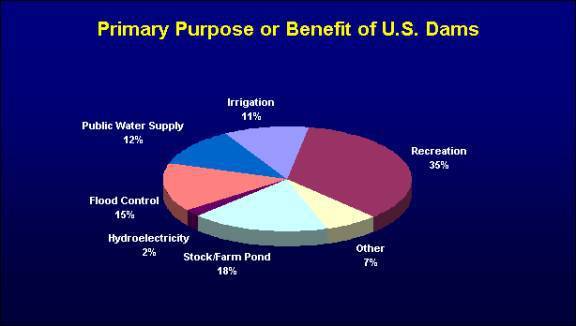
This student from Hesston College outlines the benefits of dams.
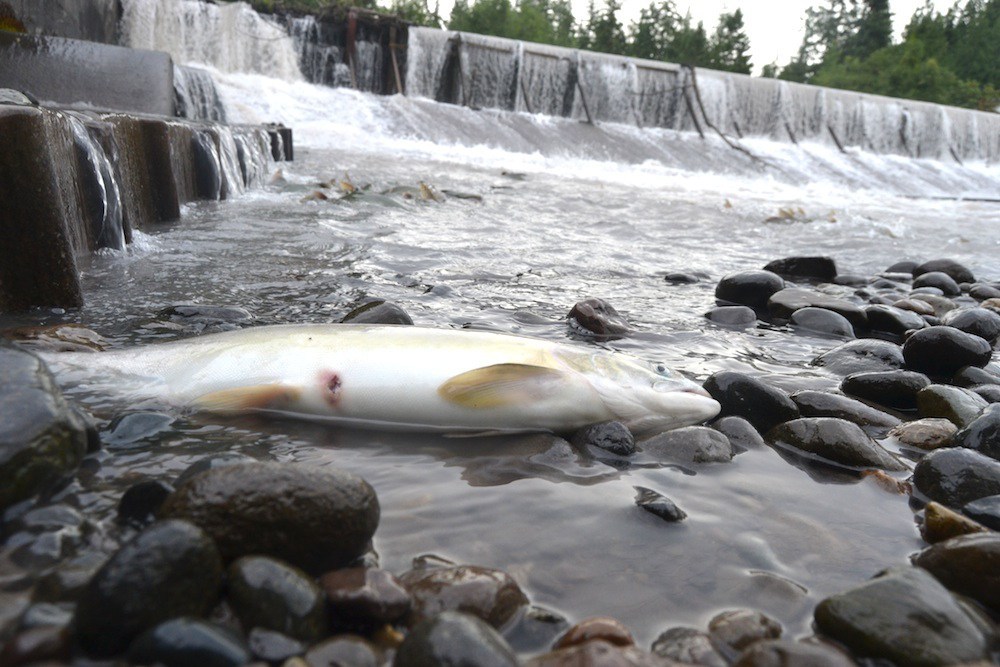
This image from Tacoma Weekly shows the negative results of dams, the prevention of fish migration.
Perspectives
Are there differences in how scientists and non-scientists communicate about this project? If so, what are those differences?
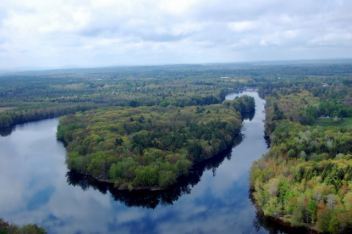
The Penobscot River Restoration project is focusing on the restoration of the river and ecosystem that has been affected by the dams in Maine. “A River Runs Through Us,” written by Butch Phillips, talks about how the increasing number of people began to effect the Penobscot. Logs were floating on the river, and dams were beginning to be built. The land was dismissed and not respected according to the Natives. The fish and ecosystems were being broken. The Penobscot Nation wants to restore the river to its natural state. They feel connected to the river, the river runs through them. An article, “Free-Flowing Waters; Collaborating to Revitalize Human and Wildlife Communities” By John Banks (from the Penobscot Indian Nation) says, “The tribe sees the restoration of the river’s ecological integrity as essential to its way of life. Penobscot Nation Chief Kirk Francis says, “We are the river, and the river is us. So it follows that river restoration and cultural survival are inextricably linked.” He describes the Penobscot Project as the most significant conservation effort in the tribe’s history.” (Banks, John & Day, R. Laura).

Scientists are not the only ones interested in and dedicated to the river restoration. People are also looking for other ways to benefit from the river. Kevin Miller from the Portland Press Herald talks about the Penobscot river. “For advocates of dam removal, including conservationists and recreational fishing groups, the goal is clear: Restore the health of river ecosystems so that fish populations can flourish again, and provide economic benefits that flow to local communities from healthy fisheries, paddling and other forms of recreation.” (Miller, K.).
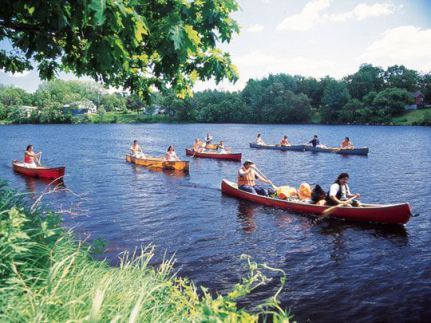
There are clear differences between how scientists and non-scientists communicate about this project. Scientists are arguing about the benefits of the ecosystems within the river and benefits to the environment. Plus, scientists want to focus on the fish, in hopes of bringing back the Atlantic Salmon. The Penobscot Nation is also encouraging the ecological benefits, but also restoration in their own culture and beliefs. They are going beyond the river itself, the river has a special meaning for the Natives. Conservationists are looking at the river as a way of providing recreational benefits and providing different features for people to access.
There are many benefits to the restoration of the Penobscot river. There is a clear message of collaboration between the Natives, scientists and conservationists. They are all working together to reach a common goal, to restore the Penobscot river. This project is a good example of a natural resource partnership. This collaboration is important to helping manage our natural resource, which in this case is the Penobscot. Everyone benefits from this project. There are many different ways of communicating about the river restoration. There are different viewpoints and terministic screens that shape the way we look at this project. Each perspective on this project helps mediate and explain the importance and benefits of river restoration.
Disagreements
Are there any disagreements related to the science in the Penobscot River Restoration Project?
With every great revolutionary change, there will be disagreements and oppositions. “This project has people all over the country and the world thinking about new ways to address river management,” says Mike Tetreault, executive director of The Nature Conservancy in Maine. With the communication involving the river reconstruction, several disagreements and concerns emerged. Maine’s own Governor, Paul Lepage, is a fan of hydropower and doesn’t agree that dams are damaging. In fact he called for more dams, not fewer and called the removing of the Great Works dam “irresponsible.” However, energy production on the Penobscot River ultimately did not fall, and actually increased with two other dams being upgraded to fill the gap. Energy production on the West Enfield, Medway, and Stillwater dams have already been increased. Ultimately the energy increase on the Penobscot River of up to 25,751 megawatt hours has been approved over the next few years.
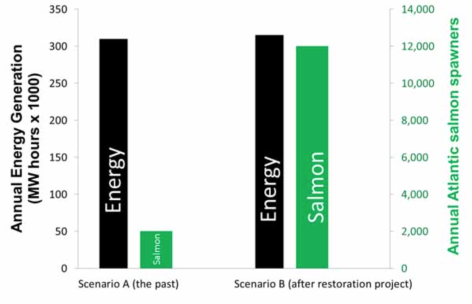
Between 2008 and 2010, the waiting period during the federal and state permitting process, the public was encouraged to comment on the project. The Millinocket Town Council was one of a small number of opponents to the project. Ultimately counselors approved of the Restoration Trust’s overall goal in restoring fish populations of Atlantic salmon, sturgeon, alewives and other suffering fish populations. However, they feared that invasive species would also get into the river and ultimately destroy the region's native fisheries. Piscataquis County commissioners, the Millinocket Fin & Feather Club, and former state fisheries biologist Paul Johnson shared this same fear.
The DEP permit for Howland (a proposal to decommission the Howland dam and build a fish bypass) acknowledged the potential for harm to native fish should the invasive species Northern Pike use the bypass to reach the West Branch of the Penobscot River. However, the ultimate goal of scientists and researchers was to “restore and maintain a healthy aquatic ecosystem that conserves native biodiversity and manages or prevents the invasion of non-native aquatic species.” In doing so, they restricted upstream passage for invasive species in areas where risks were the greatest. Scientists laid out a clear plan to address these concerns with the Penobscot Operational Plan. The scientific communication acted pragmatically in that through communication with the public, scientists and researchers behind the Penobscot River Restoration Project were able to meet public concerns and shaped the decision-making process.
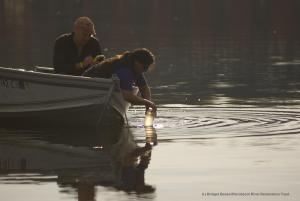
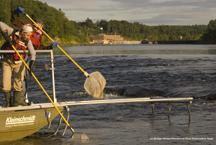
References
- Banks, John & Day, R. Laura (Spring 2014) Free-Flowing Waters Collaborating to Revitalize Human and Wildlife Communities. Retrieved from https://www.bostonfed.org/commdev/c&b/2014/spring/collaborating-to-revitalize-human-and-wildlife-communities-along-the-penobscot.htm
- Fisheries Division Newsletter. (2007). Retrieved December 2, 2015, from http://maine.gov/ifw/fishing/newsletter/
- Impounds. (2006, April 4). Retrieved November 17, 2015, from http://www.maine.gov/megis/catalog/metadata/impounds.htm
- McCrea, N. (2012, June 12). Crews begin removing Great Works dam; interior secretary calls effort ‘milestone for river conservation’. Retrieved December 2, 2015, from http://bangordailynews.com/2012/06/11/news/bangor/crews-begin-removing-great-works-dam-3-5m-in-federal-funds-pledged/
- Miller, K. (2008, August 22). River Trust to Buy dams on Penobscot. Retrieved November 15, 2015, from http://www.penobscotriver.org/assets/River_trust_to_buy_dams_-_BDN_8-22-08.pdf
- Miller, K. (2010, July 21). Penobscot River dam removal, fish restoration project approved. Retrieved November 18, 2015, from http://www.penobscotriver.org/assets/Penobscot_River_dam_removal_fish_restoration_project_approved_-_BDN_7-22-10.pdf
- Miller, K. (2015, September 27). Two years after dams’ removal, Penobscot River flourishes – The Portland Press Herald / Maine Sunday Telegram. Retrieved December 2, 2015, from http://www.pressherald.com/2015/09/27/a-river-revived-the-penobscot-river-two-years-after-dams-removal/
- Millinocket Council Opposes Dam Removals. (2009, January 27). From http://bangordailynews.com/2009/01/27/news/millinocket-council-opposes-dam-removals/
- NOAA: 2009 Global Temperatures Well Above Average; Slightly Above-Average for U.S. (2009). Retrieved December 2, 2015, from http://www.noaanews.noaa.gov/stories2009/20091208_globalstats.html
- Operational Plan for the Restoration of Diadromous Fishes to the Penobscot River. (2009, July 2). From http://maine.gov/dmr/searunfish/reports/Penobscot_Operational_Plan_final_2009.pdf
- Penobscot River Restoration Project. (n.d.). Retrieved December 2, 2015, from http://www.nrcm.org/documents/penobscot_facts.pdf
- Phillips, Butch., (2005) A River Runs Through Us. Retrieved from http://www.penobscotriver.org/assets/river_BP06_blue.pdf
- The Penobscot’s song. (2012, June 16). From http://www.economist.com/node/21556944
A Communication Approach to the Science of Dams
Karla Boyd
The Penobscot River Restoration Project & The Dam Science
The Project
The Penobscot River Restoration Project (PRRP) is among the largest and most ambitious river restoration projects currently underway in the United States (Lake et al., 2012). The scope of the project spans 11 mi from the Great Works Dam to the Howland Dam. The goal is to restore diadromous fish runs for this stretch and allow fish to access historical spawning and refugia habitat while still maintaining the same output of hydropower. Figure 1 shows the scope of the project and the major changes that have occured in the system.
Dams and Ecology
There are roughly 75,000 dams in the United States that are above 3 feet tall. These structures were mainly built at the turn of the 20th century when humans started harnessing hydropower and waterway transportation. In Maine, the same can be said about using our waterways during this time with the boom in timber harvest and the log runs. Even after the log runs ended and mills ceased their operation, hydropower was continually being generated at many of these old dams. Currently, hydropower accounts for 26% of Maine's energy (Miller, 2015). In addition to energy security, dams also provide jobs and water reserves behind the dams. The darker side of these dams are that they are directly involved with pollution, habitat degradation, and the reduction of diadromous fish populations. Dam owners and operators often try to mitigate these damages, but that can be costly and challenging to achieve. In the case of the PRRP, mitigations came in the form of an upgraded fish lift, a fish bypass, removal of some dams, and intense research efforts.
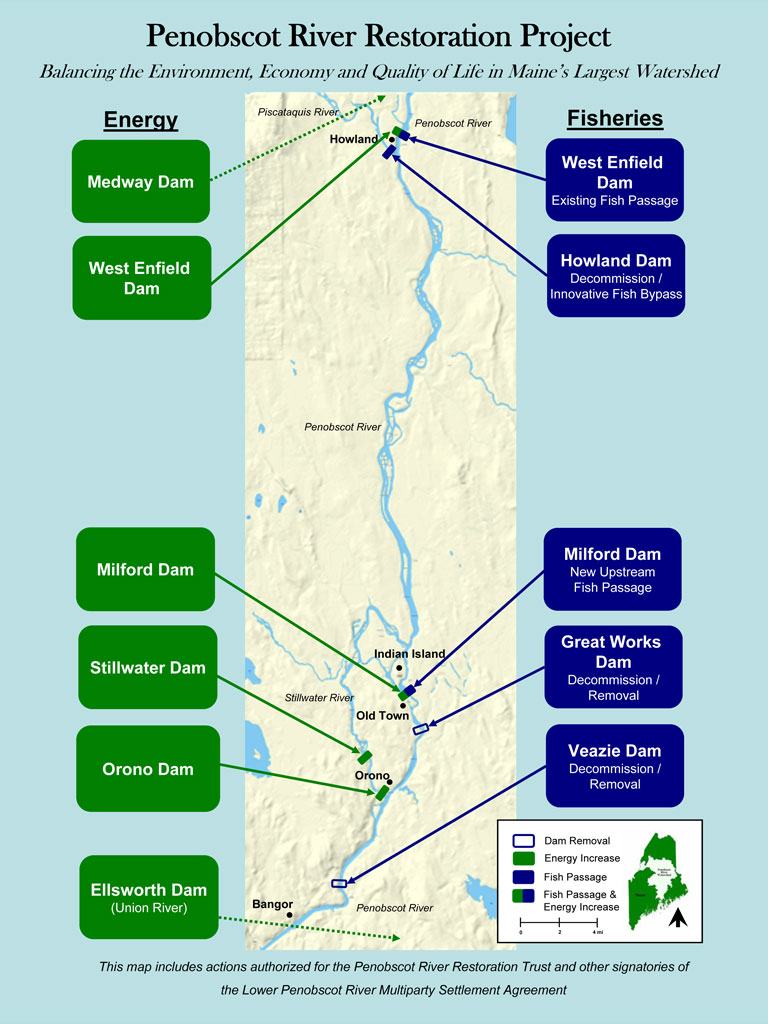
Figure 1. A project map of the Penobscot River Restoration Project from the Penobscot River Restoration Trust.
The Fish
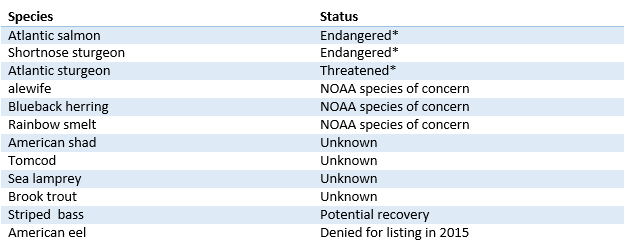
Figure 2. The 12 diadromous species that spend some stage of their lifecycle in the Penobscot River in Maine. *Listed under the ESA (NOAA.gov).
There are 12 species of diadromous fish (Figure 2) that frequent the Penobscot River. The historic declines and consequent low abundances in contemporary diadromous populations are largely attributable to the construction and operation of dams (Trinko Lake et al., 2012).
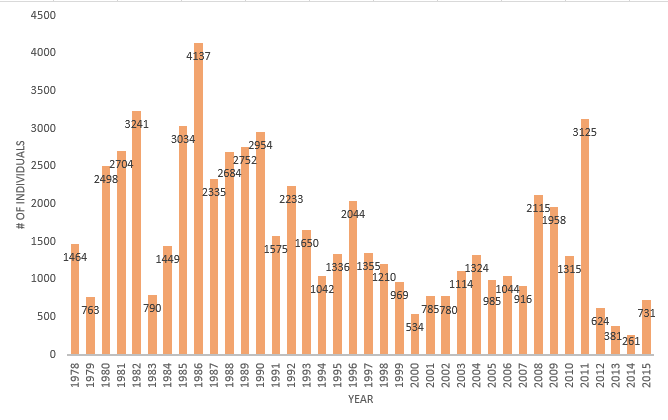
Figure 3. Atlantic salmon returns for the previous 37 years at the Milford dam. Data taken from DMR as of 11/23/15.
Of these 12 species, the most famous resident in the Penobscot waters is arguably the Atlantic salmon (salmo salar). The life history of the Atlantic salmon is a complex process that requires unobstructed access between freshwater, estuarine, and marine environments (Saunders et al., 2006). Figure 3 depicts the current returns of salmon at the upgraded fish lift on the Milford dam. Since the removal of the Great Works and Veazie dams, more salmon have been able to reach the Milford dam, where they are either allowed to go upstream or are sent to the hatchery for broodstock. Smolts are generally stocked from hatcheries, and have high mortality from downstream passage through dams. Hatchery supplementation is likely sustaining the Atlantic salmon population in the Penobscot River watershed (Nieland et al 2015).
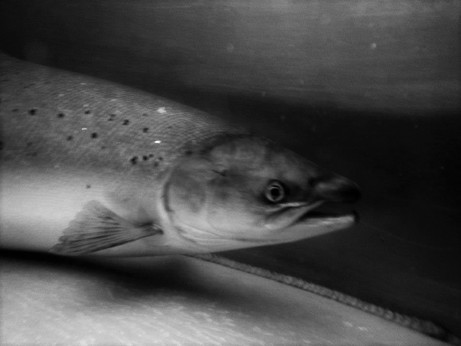
An Atlantic salmon at the Milford Dam sorting facility. Photo in compliance with Permit #TE-697823.
The other 11 species of diadromous fish are also impacted by dams in the river. In many cases, American eels (Anguilla rostrata) are caught in turbines or are unable to scale the surface of dams. American shad (Alosa sapidissima), the noblest of the fishes, are highly sensitive if handled and the stress of passing a dam can often be fatal. Shortnose sturgeon (Acipenser brevirostrum) have only recently been found in the stretch of river above the ghost of the Veazie dam - an event that hasn't happened since 1912 when the dam was built. Alewives are another success story with a mixture of stocking and restoration of historical habitat. This year alone, 589,503 alewives (Alosa pseudoharengus) successfully passed the Milford dam, a feat accomplished with the help of stocking efforts in Chemo Pond, Mud Pond, and Mattamiscontis Lake. Although we are seeing some areas of improvement for many of the diadromous fishes since the dams were removed, it's hard to make any conclusions because of differences in life histories and lack of data.
Dam Science as a "Risk Assessment"
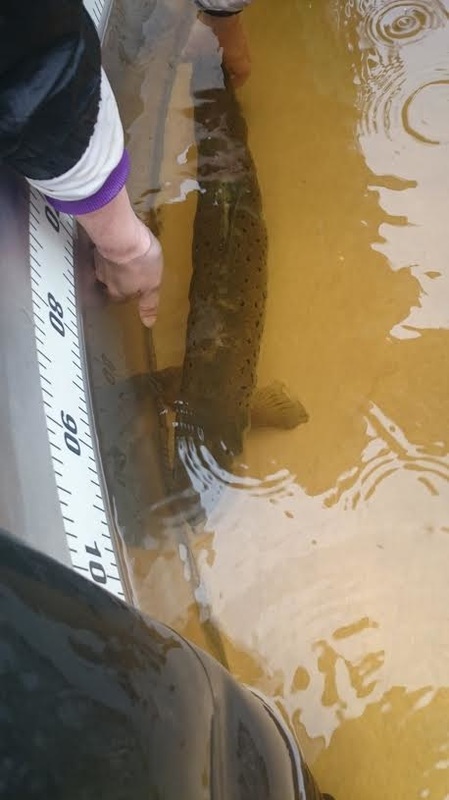
"Working up" an Atlantic salmon at the Milford Dam sorting facility. Photo in compliance with Permit #TE-697823.
In the text of Cox and Pezzullo (2016), "Risk Communication" is highlighted as an issue associated with major environmental change. This case study provides an issue that is communicated about in a way that is a "risk communication" to the environment. In its classic context, risk communication is referencing human related harms or risks, but it could be applied to the riverine ecosystem. When assessing a risk, there is a "technical approach to risk assessment" that uses a 4 step process to determine the harmful effects of a risk to humans. For the dams in the Penobscot River, the human aspect of this risk assessment will be replaced with the environment/ecosystem.
- What is the hazard or potential source of danger?
- What are the pathways of environmental exposure to these sources?
- What is the relationship between the level or dosage that is received and any harmful responses in the exposed ecosystem?
- Is the risk safe or unacceptable?
In this situation, the hazard that the dams in the Penobscot River brought were fragmentation of critical diadromous fish habitat, pollution, and degraded/little spawning habitat below the lowest dams. Pathways of exposure to these hazards were total or partial blockades that prevented fish from travelling to spawning and refugia habitat above dams as well as pollution from sediment and industrial entities along the river that were built up behind the dams. Because of this, habitat that was accessible was either poor quality or virtually unsuitable for many species. If we treat the number and quality of dams as the dosage, the more dams with poor fish passage that exist in a riverine ecosystem, the greater the negative response from diadromous fish assemblages. With this infrastructure on the river, many mills and plants that also utilized the river are more abundant and contribute to pollution. Although this risk does not directly impact humans in a negative context, it could be said that persistence of dams in an ecosystem is a risk or unacceptable without proper mitigation of damages. With this technical risk assessment, we can conclude that dams pose a risk to fish assemblages, water quality, and the environment.
The "Scientists"
The fish passage at Pumpkin Hill Dam in Lowell, Maine. This is similar to what the fish passage looked like at Milford Dam before the upgrade to the fish lift.
The term "scientist" is deceiving in some aspects. The many scientists involved on this project are, as most scientists in society, generally accepted as the preliminary experts. But when we communicate about an environmental risk, or any piece of science, the scientist should be specified. In the case of the PRRP, the expert scientists here were mostly biologists, hydrologists, geologists, and ecologists. In many cases, scientists are faced with the task of remaining neutral when researching highly controversial topics, which bars them from being an advocate for their own findings. This dilemma of neutrality is often associated with credibility if there is not a neutral consensus in publications (Cox and Pezzullo, 2016).
Scientists and Collaboration
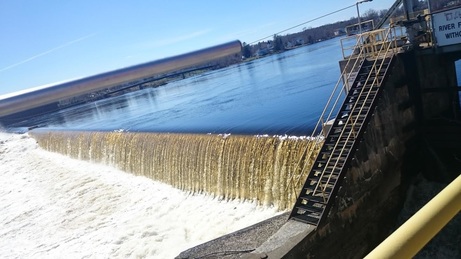
A view of the spillway of the Milford Dam in Old Town, Maine.
Dams have been known to be a risk, and with the help of the University, State, and Federal researchers there has been an increased effort to learn more about how the dam removals and dam improvements are affecting fish and their habitats. Many researchers disagree about the affects of dams on fish, their environment, and the management actions that should be taken. It is accepted, however, that total removal of all dams in the system is an unrealistic goal. To accommodate for this, dams that are the most harmful and the easiest to take out of the system are considered.
Although this scientist to scientist communication is often required in order to make research happen, scientist to non-scientist communication has also played a big role. The Penobscot River Restoration Trust (PRRT) and The Penobscot Nation were two of the main non-scientist collaborators. They have themselves funded or sparked interest to fund many of the research efforts to examine the immediate post-removal affects on the river which is an example of the collaboration that takes place.
Dam Science in the Media
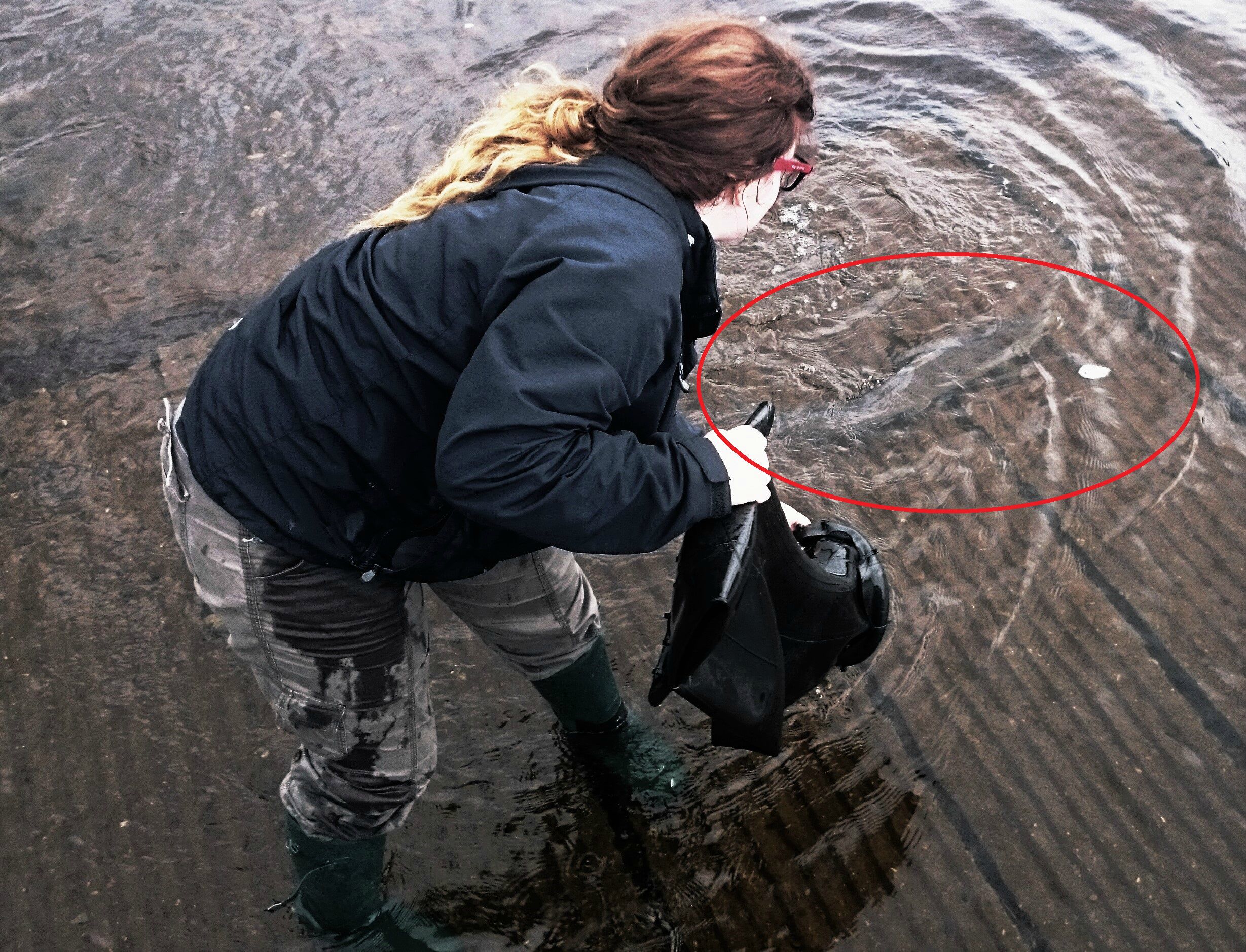
An Atlantic salmon adult release for an upstream passage study conducted at the University of Maine. Photo in compliance with Permit #TE-697823.
Much of the information that has been gathered by researchers is being published and utilized by the media. The media often uses science in informed ways to enhance awareness, but in this process there is a condensing of information. Since the science around dams is treated as a "crisis discipline," it is often reported in media outlets to make the public aware. This transparency of information is often shaped and molded to sound dramatic and pragmatic. Although information transparency is one of the goals of environmental communication (Cox and Pezzullo 2016), this can sometimes lead to misleading statements. In many cases with the PRRP, advocacy and media groups have stated that "the project will allow fish to access 1,000 mi of habitat" which is not inherently true. The PRRP will open 11 mi of fish habitat with better passage at some of the dams that will allow for potential access to 1,000 mi of mainstem river and tributaries. This disconnect between the science, media, and public sphere is in part because of these "sensational" stories, and many scientists are careful with what information they present during interviews and press releases.
What does this mean?>
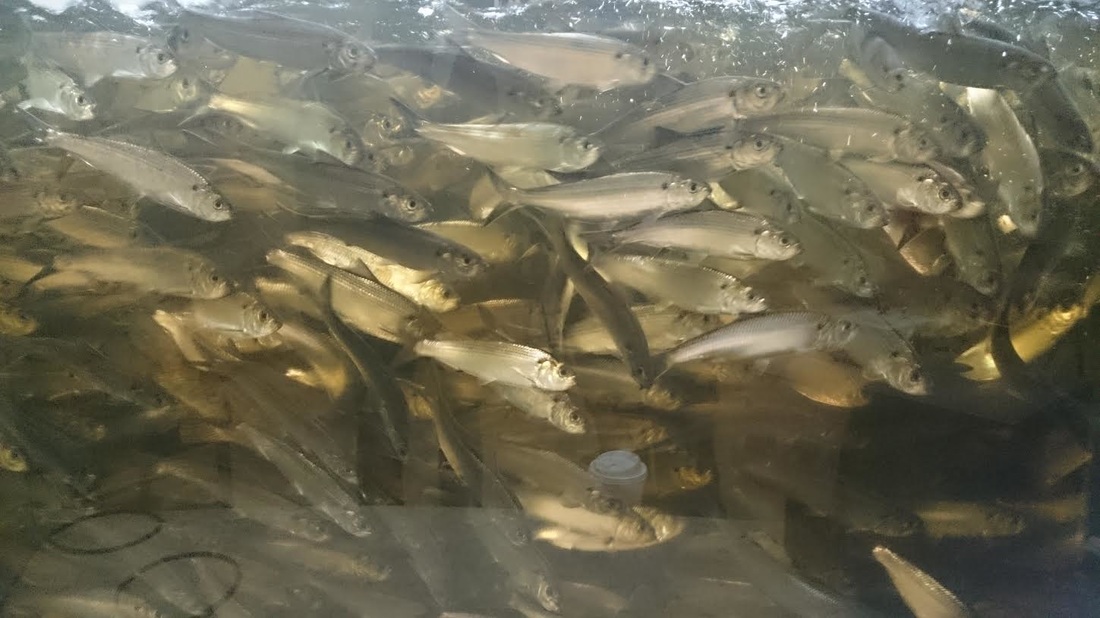
A view of the fish window at the peak of the river herring (alewife and blueback) run at the sorting facility on the Milford Dam.
The Penobscot River Restoration Project has been seen as a huge success. Throughout the course of the project, dams were assessed to be a risk to the environment and biologists and other scientists collaborated with non-scientists to effectively raise awareness and gain support. Science will continue to be used to make informed decisions like dam removal or fish passage upgrades, and this requires aspects of environmental communication to be completed. When we look at areas of the Penobscot beyond what the PRRP focused on, there are still decisions to be made. Above the scope and frame of this project, there are many tributaries that have dams on them, many of which are not operational for hydropower. Many of the small streams that drain into the tributaries are high quality habitat that are cut off by roads and small dam-like blockages made by humans. The dams that have been upgraded generally do not harbor good passage for fish once they are above the dam, and when out-migrating mortality may be high on the spillways.
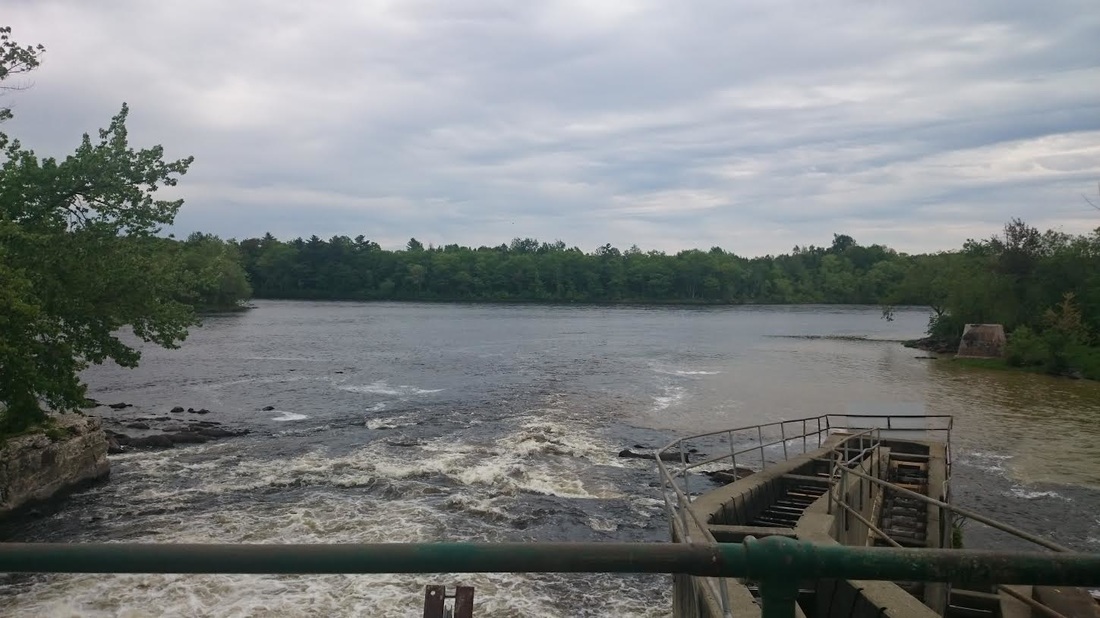
A view from the top of the Howland Dam where the decommissioned fish passage was.
The prevalence of dams in Maine will continue to thrive until these major issues are addressed. Communication on the PRRP played a key role in getting the science to the non-scientists and the public. Scientists are not always the experts because the "scientist" could be considered many diverse professions and when communicating science, highlighting the expertise of individuals plays a role in credibility. Scientists generally have a neutral public opinion, because being an advocate for their own work could also become a bias. The media often condenses science to the point where it can be misinterpreted, so many researchers are careful when releasing information. The PRRP could be just the beginning, and many dam assessments could be made on the tributaries and streams that harbor diadromous fishes. This project could even expand to other regions and serve as a model for effective environmental communication and collaboration. Many believe this project is the largest restoration effort of its kind globally and that Maine has become a model for realistic dam removal and infrastructure upgrades that offers long-term benefits to the entire system.
References
- Cox, R., Pezzullo, P. (2016) Scientists, Technology and Environmental Controversies & Environmental Risk Communication and the Public. Environmental Communication and the Public Sphere. 4th ed. Thousand Oaks: SAGE. 121-74. Print.
- Nieland, J. L., Sheehan, T. F., and Saunders, R. (2015) Assessing demographic effects of dams on diadromous fish: a case study for Atlantic salmon in the Penobscot River, Maine. ICES Journal of Marine Science, 72: 2423–2437.
- Opperman, J. J., J. Royte, J. Banks, L. R. Day, and C. Apse. (2011). The Penobscot River, Maine, USA: a basin-scale approach to balancing power generation and ecosystem restoration. Ecology and Society 16(3), 7.
- Saunders, Rory, Michael A. Hachey, and Clem W. Fay. (2006) Maine's Diadromous Fish Community. Fisheries 31(11), 537-47.
- Tara R. Trinko Lake, Kyle R. Ravana & Rory Saunders (2012): Evaluating Changes in Diadromous Species Distributions and Habitat Accessibility following the Penobscot River Restoration Project. Marine and Coastal Fisheries: Dynamics, Management, and Ecosystem Science, 4(1), 284-293.
About the Author
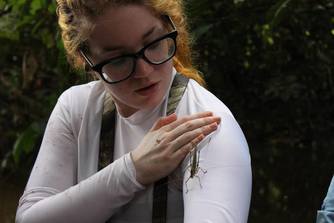
Karla Boyd, '16, was a senior in Wildlife Ecology at the University of Maine during the Fall 2015 semester. She describes her project as "an assessment of the Penobscot River Restoration Project using a commuication approach."
Extra Resources
Videos
An artistic approach to individual fish life histories that uses poetry to connect humans and fishes.
This video uses dramatic stimuli and information to raise awareness about dam removal significance.
A news story from CBS on the PRRP, using non-scientists from the Trust as the experts.
Quote:
"It's awesome to look at a river flowing through where a dam stood for almost 200 years and to think we can get back some of what we lost."
-Laura Rose Day, Executive Director of the Penobscot River Restoration Trust
Science and Risk Communication About Dams
Kelly Erickson, Chelsea Lewis, Austin McGhee, & Dean Rando
What do scientists who work on the Penobscot River Restoration Project think about its importance? What risks or tradeoffs are seen in this project?
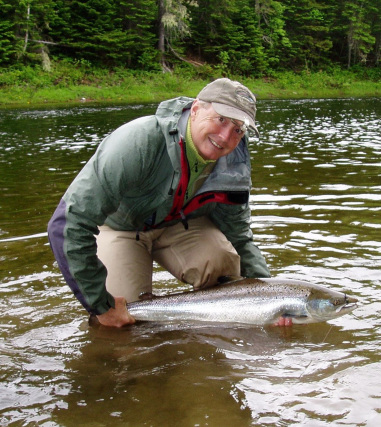
Based off my readings of articles and blogs posted by different scientists that take part in the PRRP, it seems scientists make a very close connection to the river and the inhabitants of the river itself. As said below by a scientist with a blog on blogger.com:
“We are truly inspired to see the Penobscot coming back to life, and not just because of what it means for wildlife and people. As our director, Dan Ashe, said, this project represents the future of science-driven conservation, of enduring partnerships among local communities, businesses and government, and of a promise for long-lasting benefits to the millions of people who depend on the Penobscot.” -USFWSNortheast
The scientist view the fish almost as family and treat them as such. The potential risks that come with trying to form a rhetoric towards the public eye that matches this close connection, some people may view the scientists as expressing a bias, and they may assume the scientists are even over looking the negative effects of removing th dams even if there isn’t any in reality. Basically what this means is scientists need a close connection to make a meaniful and persuasive rhetoric, but at the same time, the close connection may turn the directed audience away from the positive effects of the PRRP.
Are all experts about the Penobscot River Restoration Project scientists? If not, who are the other experts about this project and what do they say? How is this different or similar to the scientists?
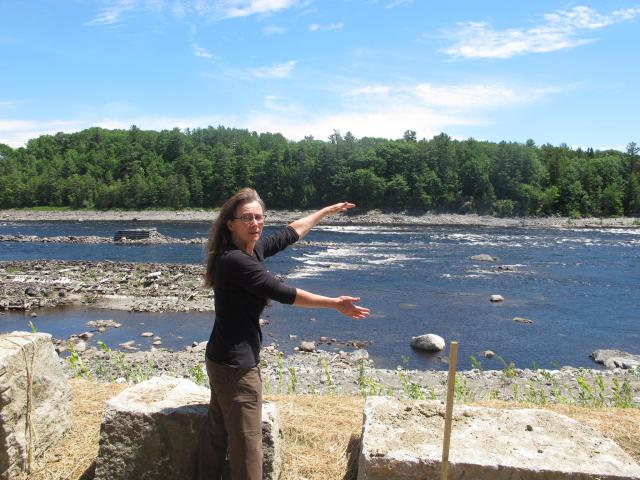
Not all Penobscot River Restoration experts are scientists. Many of the Natives of the Penobscot tribe are experts on the river and the project as well. The natives of the Penobscot know how the dam is affecting nature by the experience of seeing it happen. The elders were around when the rivers were full of fish, but now the fish population is almost non-existent for certain species.
Are there differences in how scientists and non-scientists communicate about the Penobscot River Restoration Project? If so, what are those differences?
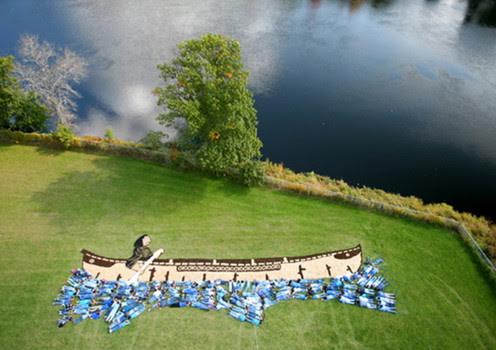
Both scientists and non-scientists agree that the Penobscot River Restoration Project will help the Penobscot river to thrive and run free again without being flooded by dams, declining fish population, and damaging the culture of the Penobscot Indian Nation. Both parties communicate about the project in many different ways. The scientists must always look at their communication about the project with factual information based on statistics and data, and also communicate completely pragmatically. Those who are communicating from a non-scientist perspective may focus on scientific facts and information, but will mostly focus on the greater good of the community, its members, and also the future of the river and how it will benefit the community. For example, in A River Runs Through Us written by Butch Phillips, we are given insight to the non-scientist’s way to communicate about the project. They talk about the history of the river, how it used to flow freely with plenty of fish for hunting. The author states “The Penobscot Nation is committed to continue our efforts until the fish, wildlife and plants are safe to eat, and the sacredness is restored on the river.” This shows that although science should always be taken into account when communicating, non scientists communicate with the community and its members in mind.
According to scientific studies, what are the different types of impacts of dams and dam removal? How does this science inform decision-making about potential options?
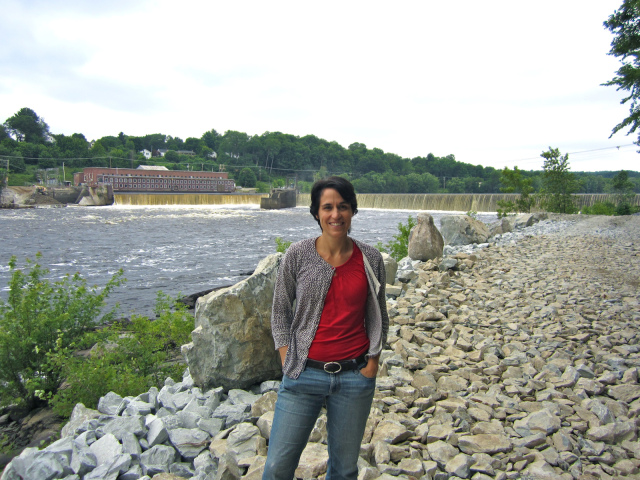
Scientific studies have revealed many impacts of dams and dam removal on the environment and ecology. When dams are put in place, it blocks migration routes for fish like Salmon, forcing them to create new spawning habits/areas for the offspring. Fish are not only affected within their migrations and spawn points, but by the degradation of the water caused by the dam. The once free-flowing river is blocked off by the dam making the water stagnant at a point, causing rising temperatures and decreased oxygen levels within the water. Conferring to International Rivers Article Environmental Impacts of Dams; In 2002, thousands of salmon were found dead in the Klamath River due to low flows.
Due to the lack of sediment, the river may begin to erode away at the bed and along the banks of the river to replenish its needs. The river can erode kilometers below the dam. This can cause bridges and other river bank structures to be swallowed by the corroding river. The alteration of the riverbed shrinks habitats for low spawning fish. Drastic river-flow change can create modifications amongst aquatic and riparian life. The lowering of the ground table level instigated by the river eating away at the bed, can harm many organisms. Plants along the river may no longer be able to have access to water level, resulting in the plants to die. The decreased water levels can an environmental crisis, triggering the unwinding of the ecological web of the river. When removing the dam, one of the largest concerns is watershed management. This includes determining the magnitude, timing, range of physical, chemical, and biological responses according to David Hart's lecture Dam Removal: Challenges and Opportunities for Ecological Research and River Restoration. This determines how the dam can be best removed based upon restoration goals. Releasing the built-up sediment from a dam can harm the ecology as it must be tested.
A benefit to dam removal is advancing ecological research by “testing and refining” models of complex ecosystems. When talking about dams, many advocates use the precautionary principle in their communication. The precautionary principal helps protect the environment against harmful actions that may be irreversible, or serious according to Dustin Mulvaney's "Green Politics: An A-to-Z Guide." In the book "Forests, Water and People in the Humid Tropics" By M. Bonell, the precautionary principal is talked about within the text. The record-breaking Panama Canal is forty-eight miles, leading to substantial build-up of sedimentation. With all the sediment building up, the precautionary principal makes it “incumbent” for us to resolve the problem. The build-up can greatly affect the canal's operations within the next two decades. The USAID sent out reports saying that if we assert the siltation within the dams, it can cause hundreds of millions of dollars in damages to the barrages.
Are there any disagreements related to the science in the Penobscot River Restoration Project?
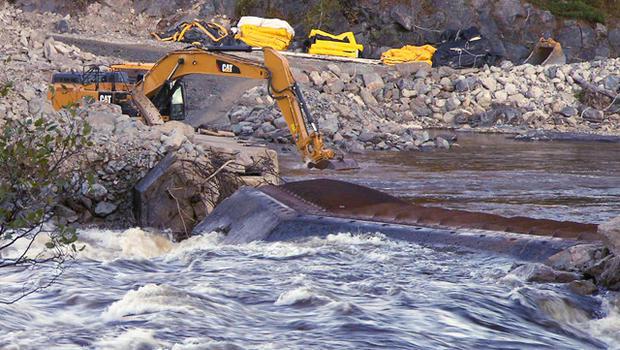
The Penobscot River Restoration Project is “an unprecedented collaboration between the Penobscot Indian Nation, seven conservation groups, hydropower companies PPL Corporation and Black Bear Hydro, LLC, and state and federal agencies, to restore 11 species of sea-run fish to the Penobscot River, while maintaining energy production.” (Penobscot River Restoration Project). This project was started to protect wildlife, ecosystems, and cultures centered in, along, and with the river. Two sides conflict, those who wish to remove the dam and restore salmon and fish runs, and those who wish to keep the dam for job security and produce hydroelectric power. The main cause for disagreement is that knocking the dam down will restore fish but will terminate hundreds of local jobs. But these disagreements can be settled as told by Waldman and Limburg, who promote a solution. The penobscot river dam, and dams around the country, produce hydroelectric power, which causes much more pollution that other means of producing energy. Waldman and Limburg suggest removing the dams, restoring fish populations, creating a cleaner and healthier river, and creating new jobs with the use of alternative energy like solar power. The destruction of dams will also create fringing wetlands and forests. The disagreements related to the Penobscot River Restoration Project are easily resolved by acknowledging all parties involved and promoting a solution to this problem that not only affects the community, but the ecosystem of the Penobscot River.
References
- http://ne-ecological-services.blogspot.com/2012/06/whos-talking-about-penobscot.html
- http://www.nature.org/ourinitiatives/regions/northamerica/unitedstates/maine/explore/penobscot-river-restoration-project-detail.xml
- “Penobscot River Restoration Project.” Penobscot River Restoration Project. N.p., n.d. Web. 16 Nov. 2015.
- http://bioscience.oxfordjournals.org/content/52/8/669.short#
- https://www.internationalrivers.org/environmental-impacts-of-dams
- https://www.internationalrivers.org/environmental-impacts-of-dams
- Forests, Water and People in the Humid Tropics
- Green Politics: An A-to-Z Guide
- “Penobscot Nation.” Homepage Slider RSS. Web. 11 Dec. 2015.
- “Penobscot River Restoration Project | Home.” Penobscot River Restoration Project | Home. Web. 11 Dec. 2015.
Rhetorical Solution to the Penobscot River
Mike Heikkinen & Claire Lacy
Overview
In this video, we apply the concept of the rhetorical situation to the Penobscot River and think through this concept to present the Penobscot River Restoration project as a rhetorical solution.
We do this by blending video materials produced by a variety of news and non-profit organizations to present the Penobscot River Restoration Project in a gripping manner.
Dams and Rhetoric
Alyssa Remillard, Adam Chapman, & Aedan Higgins
The Rhetorical Situation: Exigence, Audience, and Constraints

To show the differences in the presentation of rhetorical situations, we'll look at the exigence, audience, and constraints of different news articles.
This article from the Bangor Daily News highlights the obstacles faced by a coalition of environmental stakeholders in getting dams in the Penobscot removed. The exigence (overarching problem that is being faced) of this article is that river-running fish are being blocked by the Veazie, Great Works, and Howland dams. The audience of this article may include readers of the Bangor Daily News as well as stakeholders in the environmental collaboration that was set to decommission these dams. This article, as well as the negotiations themselves, have multiple constraints reducing its rhetoric. Some groups may benefit from the existence of these dams, some readers may not feel as invested in these proceedings due to living too far away from them. Furthermore, the cost of purchasing these dams from PPL would be $25 million. Despite these constraints, the article still crafts an effective rhetorical situation in the mind of the reader. It clearly states that there is a problem and that things need to be done to solve it.
This article from The Economist, published four years after the last one, showcases some of the progress made in the dam removal process. The exigence is again that river-run fish are dying out due to dams. The audience includes readers of the Economist and, again, stakeholders in the Penobscot river restoration. However, this article differs the most from the previous example in its constraints, which mostly have to do with how the article is written. The subheader "A River is Brought to Life again" seems to imply that all of the work is already done, which could result in less support garnered for the Penobscot River Restoration. It also fails to state how exactly the river has been "Brought to life again," stating only the impact of the existence of dams themselves and not the impact of removing them. Lastly, the article fails to state what goals the Penobscot River Restoration still has. Therefore, the rhetorical situation that this article creates is more unclear and contradictory than the one published by the Bangor Daily News.
Rhetorical Analysis
In the field of environmental communication, people make different arguments about dams, rivers, and river restoration depending on what goals they want to accomplish. However, even people arguing for opposite goals use similar structures in order to communicate their messages. A primary way people make arguments about dams, rivers, and river restoration is through the use of framing. As defined by “Environmental Communication and the Public Sphere”, framing is “the cognitive maps or patterns of interpretations that people use to organize their understanding of reality.” In arguments, framing is used to convince people by tilting a story in a certain light, in order to be more persuasive to different audiences. As defined by “Environmental Communication and the Public Sphere”, framing is “the cognitive maps or patterns of interpretations that people use to organize their understanding of reality.” For example, using a historical perspective to frame an argument for the removal of dams would be effective in appealing to many Maine audiences, as history is something that is cherished in Maine. An example of historical framing can be found in the article “The Penobscot’s Song.” By talking about the historical levels of salmon and the traditions which surrounded salmon fishing, the article appeals to readers who value history and traditions. Other examples of frames which are frequently used to argue about dams, rivers, and river restoration include: social progress/public health, economic development and competitiveness, ethics, scientific uncertainty, and finding a middle way/alternative path.
These arguments shape our understanding of dams, rivers, and river restoration through the process of encoding and decoding. Arguments are created through messages, which is encoding, and the audience interprets these messages through decoding. Environmental communication, and arguments about dams and rivers, are constitutive and pragmatic. The facts and information that the audience receives by decoding arguments is pragmatic communication. Through the pragmatic, people arguing about dams attempt to educate and persuade their readers. For example, the article “River Trust to Buy Penobscot; On Penobscot; Three Sites Key to Group’s Fish Conservation Plan” educates readers by providing information about the finances that the Penobscot River Restoration Trust must raise. On the constitutive level, arguments “invite a particular perspective, evoke certain values (and not others), and thus create conscious referents for our attention and understanding” (Cox and Pezullo, p. 363). The same artifact works on the constitutive level by evoking values of economics and finances by drawing the audience’s attention to specific financial figures such as the $25 million the Penobscot River Restoration trust would need to raise to complete their project.
Metaphors and Tropes
Authors use metaphors to elevate our understanding of nature by comparing it to that of which we already feel a certain kinship with. These metaphors often are mechanic or human, depicting the river as some sort of extension of the human body. Giving the animals and the river human qualities gives the nature a sense of “life” that may not have been inherent on the first viewing. The use of metaphors when communicating the environmental message varies from audience to audience. A key example of the different ways that metaphors are communicated is the contrast between those used by Rachel Carson in her book Silent Spring, and those used by Native Americans.
Native Americans speak to the idea that they are a literal part of the river. Like Silent Spring, they give the river human qualities, but rather than giving plants and animals traits and “feelings” that people can relate to, they give the river the qualities of the human body. Native Americans posit themselves as the human mediator between the rivers, a sort of bridge between the two entities. The Native Americans travel within the “bloodstream” of the river, members of a vast ecosystem that they are key contributors to. The river, to the Native Americans, also works as a mediator between humans and nature. As soon as the river is restored, everything else begins to fall into place. Native Americans connect the idea of “home” with the river, positing both humans and animals within this frame. These views give us the literal view of the natural environment as human, and thus some sort of extension of our own being that we have to protect to ensure our own survival.
Silent Spring approaches metaphors and tropes in a different fashion. The audience for Silent Spring is one that would most likely rather take a scientific approach to nature than a spiritual one. Still, Carson is able to communicate a similar massage using the humanization of animals and plants, and the use of a “everyday” American village that is destroyed due to the destruction of the nature surrounding and within it. Carson’s metaphorical language comparing the “community” of natural landscapes with our own sense of community not only helps to find a common ground between the two seemingly different environments, and helps them to meld and shape into one cohesive environment. Using Carson’s method of communication in terms of talking about dams would lead to a similar viewpoint to that of the Native Americans. Rather than seeing the environment as an extension of ourselves, however, we begin to see it as an extension of our own home, our own environment. The idea that the dams are disrupting a human environment rather than “nature” helps to strengthen the bond between humans and nature.
References
- Cox, J. Robert, and Phaedra Pezullo. Environmental Communication and the Public Sphere. Thousand Oaks, CA: Sage Publications, 2016. Print.
- Miller, Kevin. “River Trust to buy dams on Penobscot, Three sites key to groups fish conservation plan.” Bangor Daily News 22 August 2008: A1. Print.
- N.A. “The Penobscot’s Song.” The Economist 16 June 2012. 1-3. Print.
- N.A. Photos: The Penobscot River Restoration Event. 11 June 2012. Photograph. The Department of Interior.
Public Participation
Alizah Thayer-Broussard & Joelene Court
Overview
Public participation played a key role in the success of the Penobscot River Restoration Project. In this video, we explore various perspectives on how public participation made the Restoration possible, especially as it relates to participation between the Penobscot Nation and other key partners.
Public Participation
Delenn Colson & Giuliana Donovan
Introduction
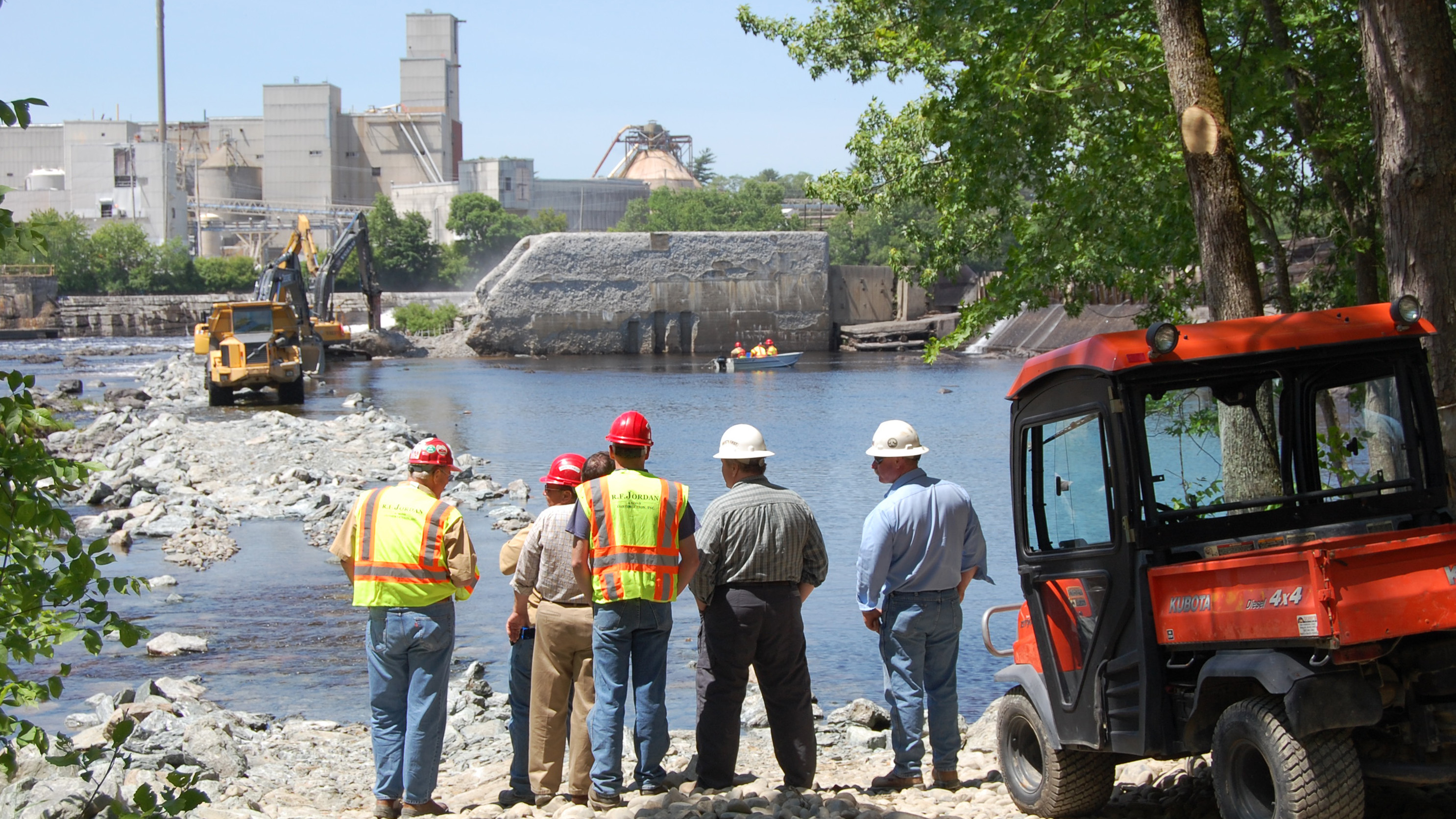
Demolition of the Great Works Dam. Image courtesy of Indian Country Today Media Network.
There were many different organizations and parties involved in the Penobscot River Restoration Project. The parties are actually so diverse that it has been known as a “cooperative conservation” because of who was involved and how well they worked together. Not only was the Penobscot Nation involved, but six conservation groups, PPL Corporation, and seven state and federal agencies. These included American Rivers, Atlantic Salmon Federation, Maine Audubon, Natural Resources Council of Maine, and Trout Unlimited, etc. On June 25th, 2004 each party signed the multi-party agreement, which was basically a roadmap of who was involved and their part in the project. The agreement not only stated that the Penobscot Trust could purchase all of the dams and remove the two most seaward dams (in Veazie and Great Works) but could also increase generation at six existing dams, and allow the communities to still have the opportunity to provide input, ideas and support throughout the process. This participation occurred with a lot of help from the PPL Corporation because they owned the dams, but agreed to sell them and become a partner in restoring the Penobscot with the interest of the sea-run fisheries to be restored as well.
The Process of Public Participation
The Penobscot River Restoration Trust made a concerted effort to inform the public so that they could meaningfully participate in the decision-making process. The Trust was able to educate and involve the public through town meetings and legal hearing concerning the project. They also made hundreds of presentations at local sporting events, festivals and community events (Input). A great example of a community events that the Trust participated in is the annual Penobscot River Revival Festival. The festival included activities for people of all ages, ensuring that everyone in the community is informed and engaged in the decision. The event included over 30 presentations available to those in attendance to learn about the proposed projects and about the fish populations it would help dramatically (Harrison, 2010). This was one of the manby times that the community was reached out to and asked for input. There were presentations in a numerous municipalities at various times so that everyone had a fair shot to learn about the project and have adequate opportunities to voice their concerns and opinions (Reardon, 2009). With these extensive opportunities to be informed and voice concerns it is clear that the Trust was able to ensure that the public would be able to meaningfully participate in the decision-making process. The Trust was dedicated to ensuring the public was adequately informed. They also gave the community many opportunities to ask question and voice concerns. This dedication and involvement in the affected community demonstrates the Trust's dedication to public participation.
Effective collaboration and public participation is a multifactorial, multi-step process that requires time and commitment from all involved parties and stakeholders. As laid out by Cox and Pezzullo in Environmental Collaboration and the Public Sphere, there are five key elements in successful participation: relevant stakeholders are at the table, participants adopt a problem-solving approach, all participants have access to necessary resources and opportunities to participate in discussions, relevant agencies are guided by the recommendations of the collaboration, and decisions are usually reached by consensus. Each step was clearly met in the process of the this project, as outlined below:
- Relevant stakeholders are at the table: As discussed earlier, this collaboration was diverse and extensive, including all of the relevant parties.
- Participants adopt a problem-solving approach: The Penobscot River Restoration Trust and the hydroelectric companies were able to come to a compromise that benefitted both sides by removing some dams, creating or enhancing fish passages at some, and increasing energy production at others.
- All participants have access to necessary resources and opportunities to participate in discussions: We talked in the paragraph above about the wide variety of events and community outreach that this project offered.
- Relevant agencies are guided by the recommendations of the collaboration: A major part of this was that the Penobscot Trust didn’t approach the hydro companies combatively. Rather, they asked for compromise and a benefit to all. Therefore, the companies involved were more likely to cooperate because they weren’t demanding the company lose major profits, but rather lose a little and gain enhancements elsewhere.
- Decisions are usually reached by consensus: Based off John Bank’s guest lecture, it is easy to infer that all parties were in this for the long haul, everyone wanted to best possible outcome, and so a topic would stay on the table until there was a general consensus on the matter.
Conclusion
Clearly everyone involved was willing to put in the commitment and really talk out the options. The many different events held in order to get the public involved and onboard made this project a good collaboration leading to clear success. These components could be transcribed into any collaborative situations. However, the specific circumstances would be different and therefore despite an attempt to incorporate all five of these main components, it may not be possible in every situation or just may not have the same result. The best example is in the second to last component, where agencies accepted guidance from the group. In future cases, success will depend on the approach of the group. It's important to remember that some agencies, even if approached in the same way as in this case, may just say it’s not their problem and walk away from the cause. It’s hard to predict success across diverse circumstances.
References
- Harrison, J. (2010, July 11). Penobscot River Revival promotes ‘connection’. Bangor Daily News, p. 2. Retrieved November 17, 2015.
- Public Input. (n.d.). Retrieved November 17, 2015, from http://www.penobscotriver.org/content/4032/public-input?ext=
- Reardon, J. (2009, March 18). Scoping Meetings and Other Public Outreach. Retrieved November 18, 2015, from http://www.penobscotriver.org/assets/PRRTs_resp_to_FERC_re_scoping_mtg_docs_-_cover_letter_-_3-18-09.pdf
Public Participation in the Penobscot River Restoration Project
Brian Messmer, Isaac Desrochers, Jake Bonollo, & Zack Hume
Introduction
When a group of people want to accomplish something, make a change, or shape their environment, it takes a lot more to get something done than just finding a solution to what they see as a problem. An outstanding example of this is the Penobscot River Restoration Project, a case study right here in central Maine. The Penobscot River Restoration Trust came together in 2004 to make drastic changes to the way the Penobscot river functioned from an environmental standing. The trust worked together to gain cooperation between PPL corporation, Black Bear Hydro, federal, state, and tribal governments, as well as six other conservation groups.
Case Study: The Penobscot River Restoration
The Penobscot River Restoration Project proves to be an interesting case study for different forms of environmental communication. In this article we will focus mostly on how the participation from the public shaped the river and how the goals of the Penobscot River Restoration Trust were identified and accomplished. People used their access, standing, and voice to make a change in their community. The members of the trust identified a problem, educated themselves, and came together to bring about a solution.
With counts of Atlantic salmon in the Penobscot River dropping down to around a thousand and staying there until 2006, the Penobscot River Restoration Trust saw the problem (Rauch). The problem was that Atlantic salmon were struggling to survive as their numbers dropped dangerously low. Once the goal was identified: to help restore Atlantic salmon numbers in the Penobscot, the Trust needed to educate themselves about the problem to come up with a solution that was viable.
To educate themselves, the members of the Trust had to use tried and true methods of communication to let them both help the communities and the environment. These communication methods include access, standing, and voice. Using these in an environmental situation is very simply environmental communication. Some of the information was relatively accessible because it was a matter of talking to the right people and asking the right questions. According to John Banks, a guest lecturer in our class and member of the Penobscot Tribe, the Penobscot Nation has known how to harvest the salmon from the river and keep it healthy for countless generations. However, it’s very difficult to keep a fish population healthy and sustained when they can’t even swim back to their breeding grounds because of the countless numbers of dams in the way. Using the access granted to them by the vast network of people and connections from the many different members, the Penobscot River Restoration trust was able to collect an extensive amount of information on the idea they had in mind for helping to restore the river and its resident Atlantic salmon.
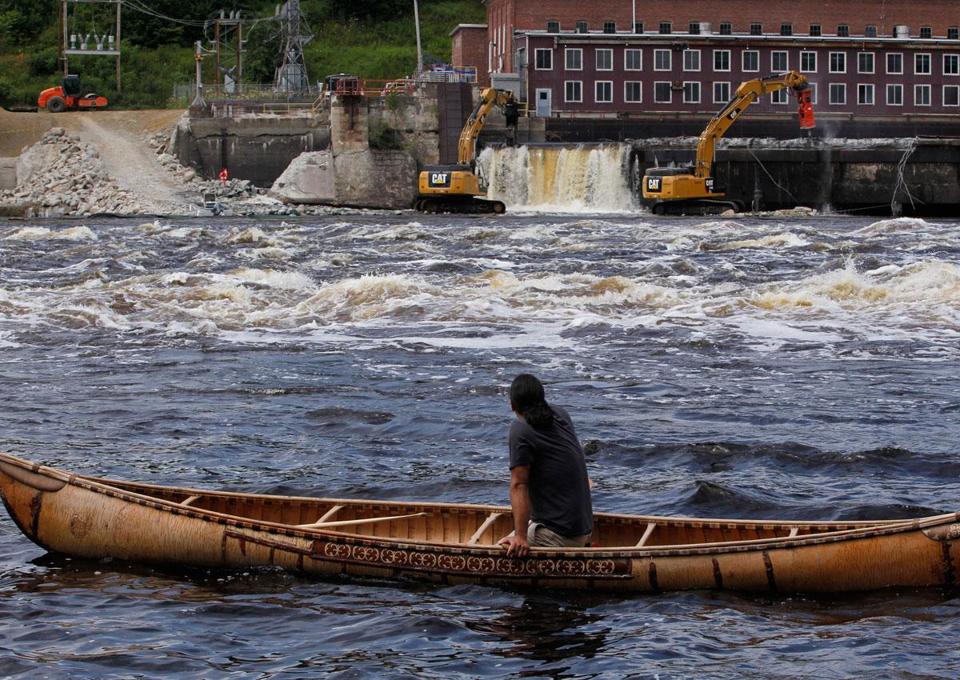
The Veazie Dam being removed. Image courtesy of the Boston Globe
Once they had access to the information it was a matter of getting their message heard. In order to ensure public participation at the local level, project leaders needed to ensure that the community knew several things. For starters, people needed to know how the proposed changes may affect them. In the case of the Penobscot river, a hefty portion of the public support came from the local Native American community of the same name, who have had a relationship with the river for as long as anyone can remember. "You look at this river - this was and is the home of the Penobscot Indian Nation for thousands and thousands of years," says Scott Phillips, a member of the tribe.
People who live along the river are also generally concerned about proposed changes. One woman, Barbara Wilson, expressed her doubts to the Portland Press Herald. Although these changes can be scary, she goes on to admit that “it is hard to remember what it looked like when the dam was here. I think the river is much prettier now”. Nature enthusiasts stand the most to gain. According to the Penobscot River Restoration Project’s list of frequently asked questions, “wildlife viewing should be improved for hikers and paddlers due to increased species diversity associated with free-flowing river segments, and angling opportunities will diversify over time”. Additionally, the now free-flowing waterway has already become the home to an annual kayak race, hosted by the Penobscot Nation.
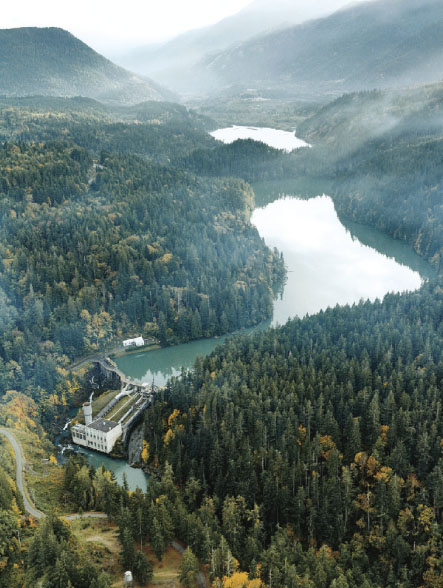
The Elwha Dam in Washington. Image courtesy of Popular Mechanics
On the national level, a similar restoration project on the Elwha River in Washington provides an excellent example on how interactive these projects can be, and the resources available to the community. Webcams were set up so that anyone who wanted to could tune in and see the progress being made in real time. Here you can see a picture of the site before the dam was removed. An interactive model of how to go about accomplishing the removal, created based on pictures of the real facility, bears a strong resemblance to the completed project.
The importance of restoring these waterways is also being recognized on an international level. One Swiss billionaire named Hansjorg Wyss has joined Bill Gates’ “Giving Pledge”, vowing to donate half of his six billion dollar fortune, with much of it funding the preservation of American waterways. One of his largest donations so far was $2 million that went to the Penobscot River Restoration Project. Despite international support, there are also threats to our native salmon population that are posed from thousands of miles away. Greenland’s fisheries scoop up a certain amount of salmon that would have returned to the Penobscot each year, and with the population in such a fragile condition, this could be troublesome, according to Daniel Morris, the U.S. representative for the North Atlantic Salmon Conservation Organization. In an article for the Maine Public Broadcasting Network, he said "there will be U.S. origin fish, and our salmon stocks are in such a precarious state that if we lose 10, 20, 50, 100 fish to the West Greenland fishery, it's a big deal."
Conclusion
In this regard, we are all one international community, and we are all responsible for changing conditions in order to provide a more optimistic future for these fish, as well as the preservation of all natural habitats threatened by human civilization.
References
- ADDITIONAL QUOTES. (2013, July 27). Retrieved December 11, 2015, from hBanks, John. "Penobscot Nation Dam Report." CMJ - 103. Neville Hall, Orono. 11 Nov. 2015. Lecture.
- Destruction of dam protest [Online Image].Retrieved December 4, 2015 from http://media.virbcdn.com/cdn_images/resize_1024x1365/26/d7d34f9f26d6ed61-ScreenShot2015- 09-25at125415PM.jpg
- Dodd-Frank Wall Street Reform 274 in the last year. (n.d.). Retrieved December 11, 2015, from https://www.federalregister.gov/articles/2009/06/19/E9-14269/endangered- and-threatened- species-determination- of-endangered- status-for- the-gulf- of-maine- distinct
- Elwha dam removal process [Online image].retrieved December 9, 2015 from http://video-monitoring.com/construction/olympic/img/elwha_dam_june_2014
- Elwha Dam Removal Process. (2014). Retrieved December 11, 2015, from http://interactive- earth.com/resources/science-visualizations/8- elwha-dam- removal-process.html
- Fact Sheet. (n.d.). Retrieved December 11, 2015, from https://www.courses.maine.edu/bbcswebdav/pid-3426019- dt- content-rid- 16993625_1/courses/43047_O_161/Penobscot Trust_Fact_Sheet_2013(5).pdf
- NOTICE OF PUBLIC SCOPING MEETING. (2007). Retrieved December 11, 2015
- "Penobscot River Restoration Trust Fact Sheet." (n.d.): n. pag. Print.
- Population of salmon scatter chart [Online image].Retrieved December 9, 2015 from https://www.registrelep-sararegistry.gc.ca/357EF835- E77E-44EE- B9B7-4F51790DE965/fig33_e.GIF
- Porter, T. (2015, June 26). Conservationists: Greenland's Salmon Quota Threatens Maine Restoration Effort. Retrieved December 11, 2015, from http://news.mpbn.net/post/conservationists-greenlands- salmon-quota- threatens-maine- restoration-effort
- PUBLIC LANDS: 'Quietly philanthropic' tycoon makes his mark in the West. (2015, March 24). Retrieved December 11, 2015, from http://www.eenews.net/stories/1060015651
- Tweit, S. (2006, February 10). Tearing Down The Elwha River Dam. Retrieved December 11, 2015, from http://www.popularmechanics.com/science/environment/a472/2294301 Rauch, Samuel D., III. "Endangered and Threatened Species; Determination of Endangered Status for the Gulf of Maine Distinct Population Segment of Atlantic Salmon." Federal Register. US Fish and Wildlife Services, 11 June 2009. Web. 10 Dec. 2015.
- Two years after dam's removal, Penobscot River flourishes - The Portland Press Herald / Maine Sunday Telegram. (2015, September 27). Retrieved December 11, 2015, from http://www.pressherald.com/2015/09/27/a- river-revived- the-penobscot- river-two- years-after- dams-removal/
- Veazie dam being destroyed [Online image].Retrieved December 6, 2015 from https://c.o0bg.com/rf/image_960w/Boston/2011-2020/2013/07/23/BostonGlobe.com/Metro/Images/dam- big-9456.jpg
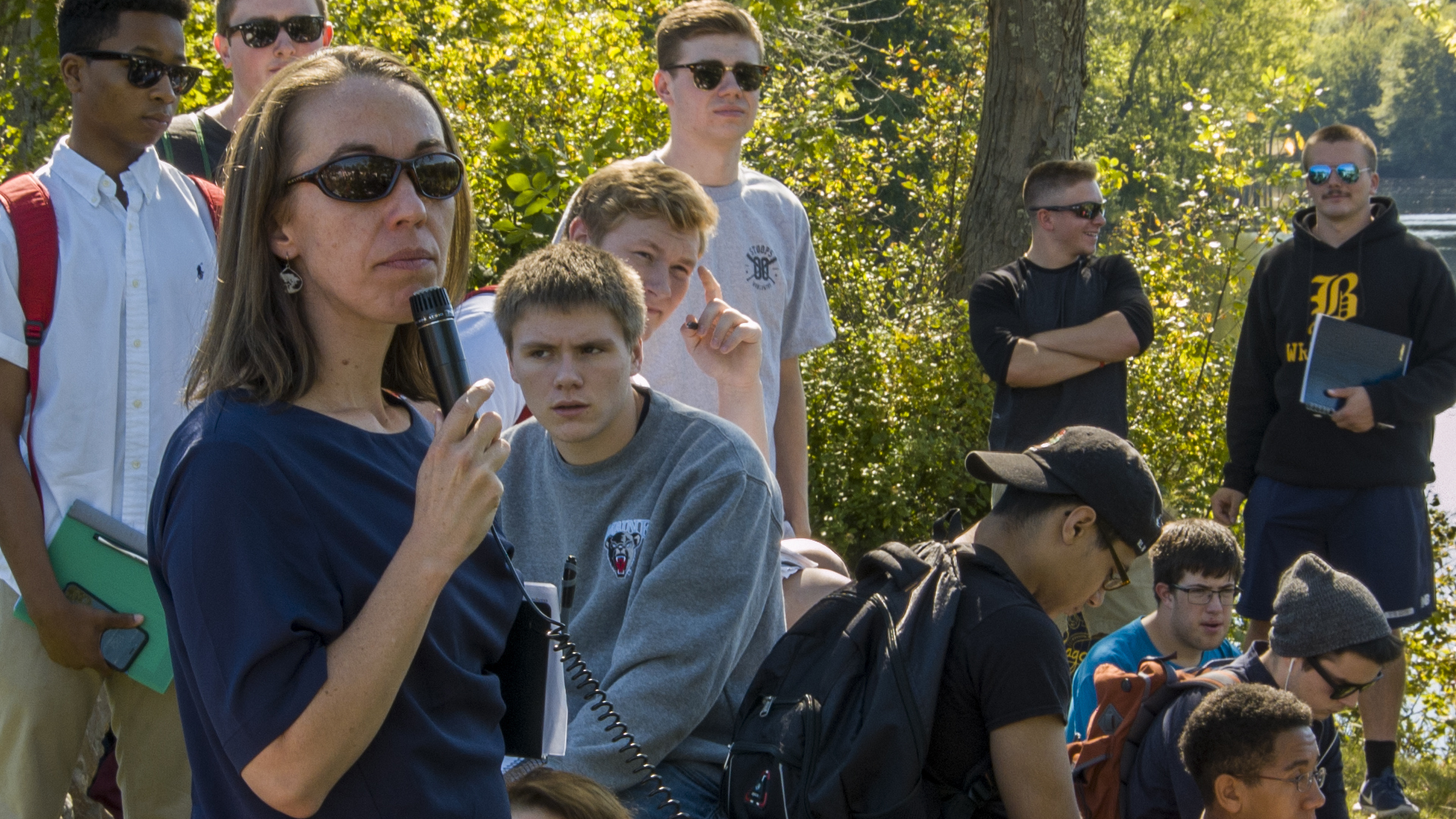
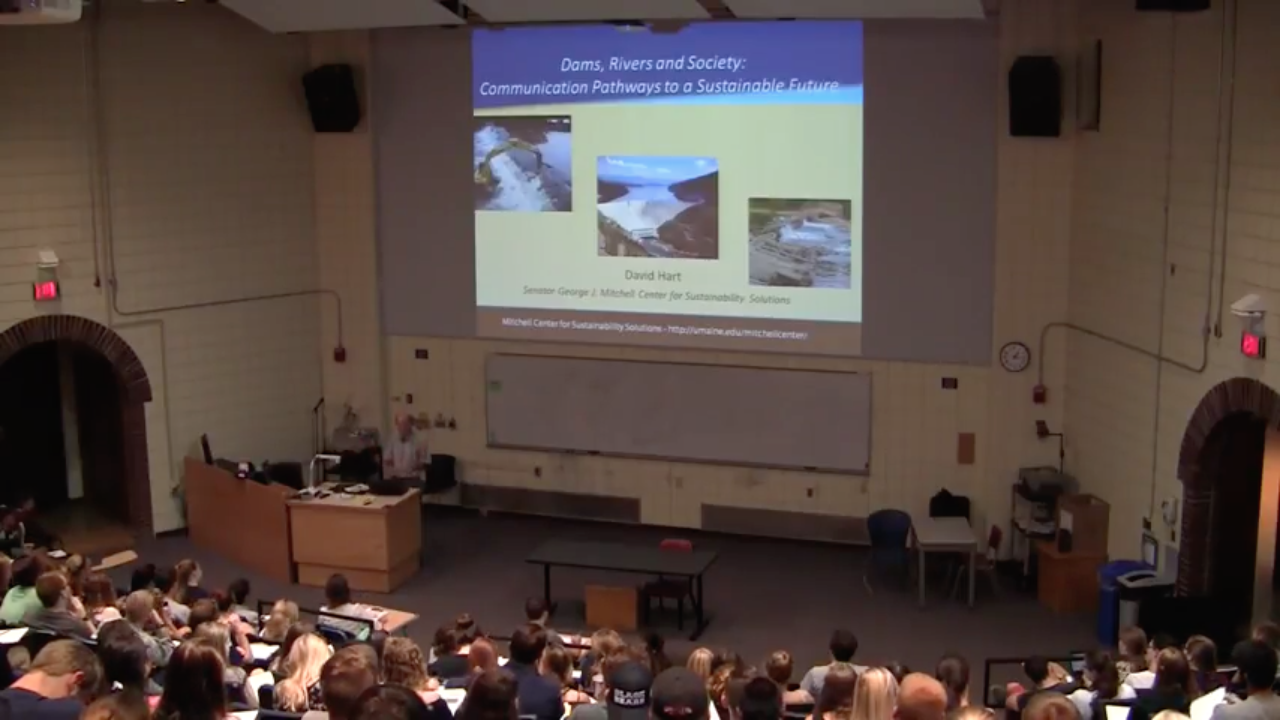
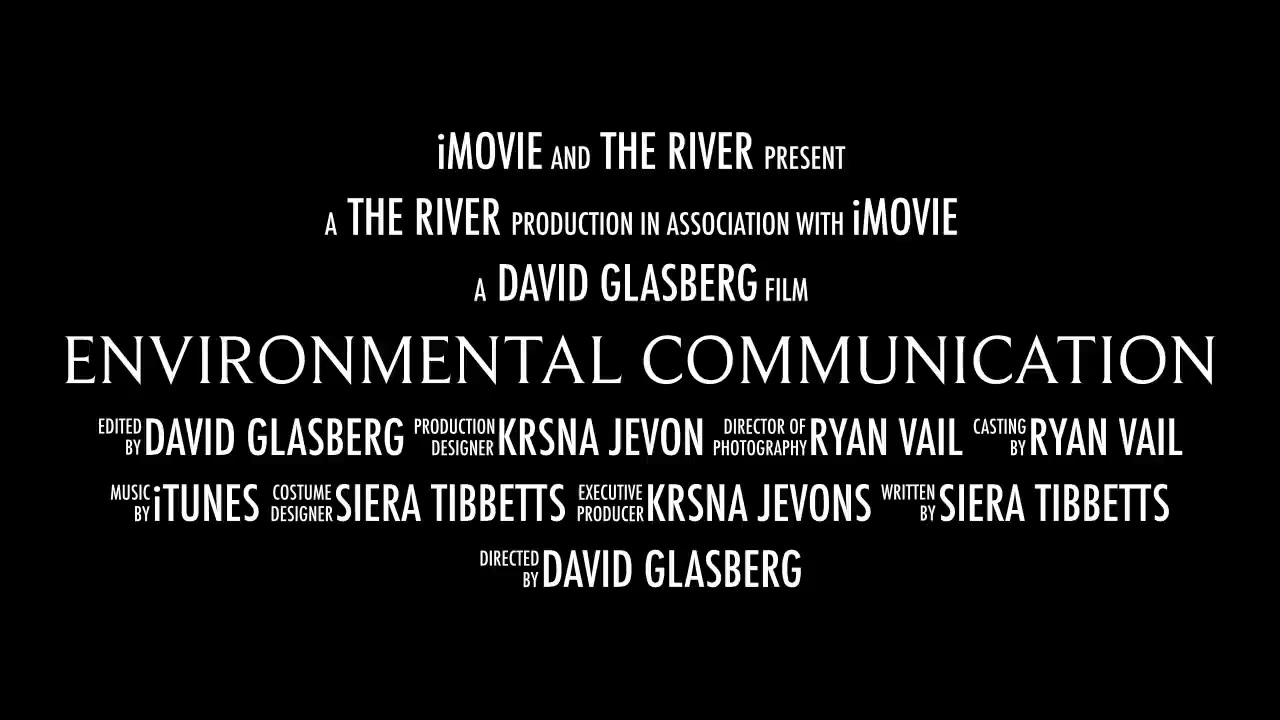
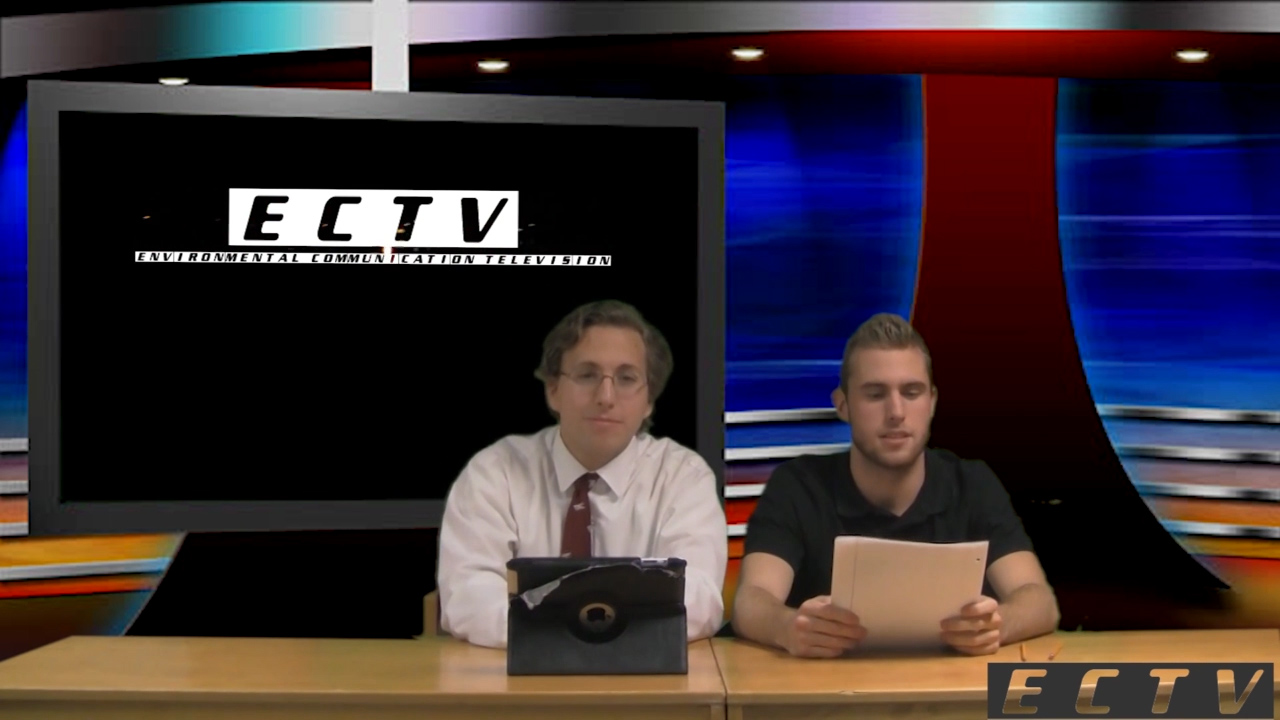
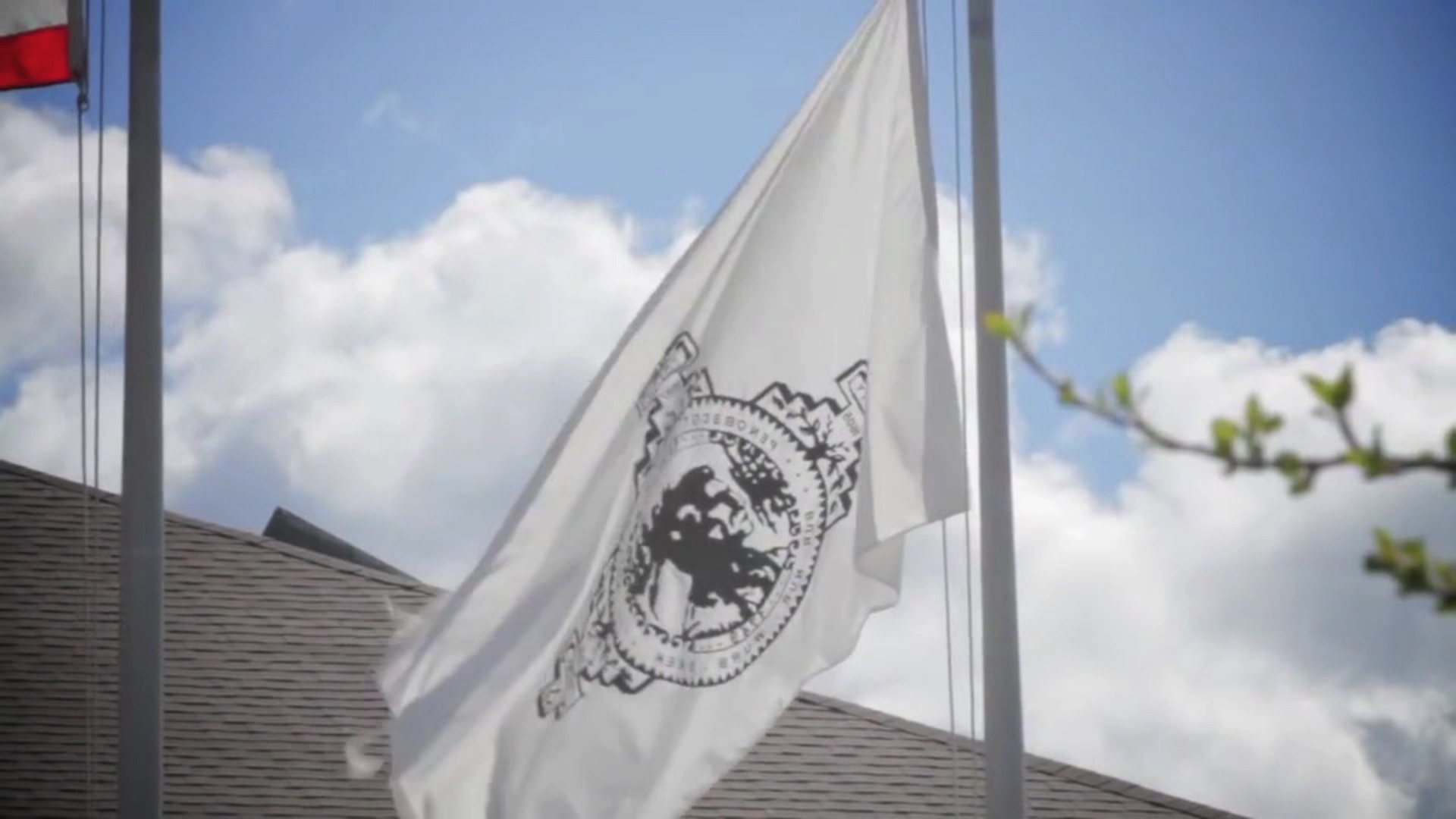
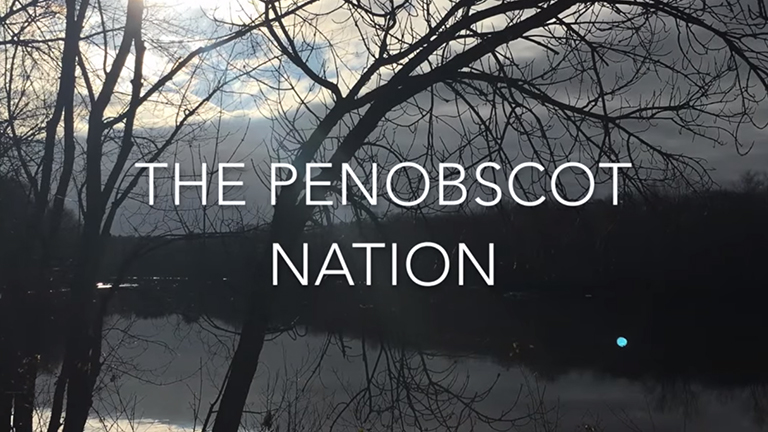
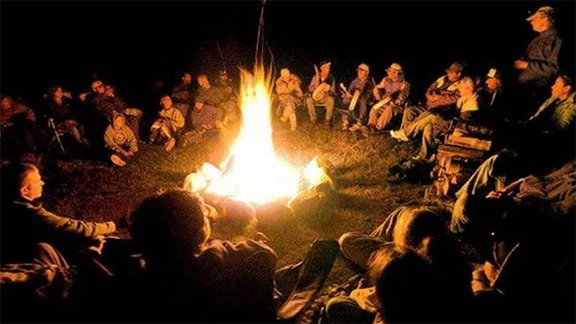
.jpg)
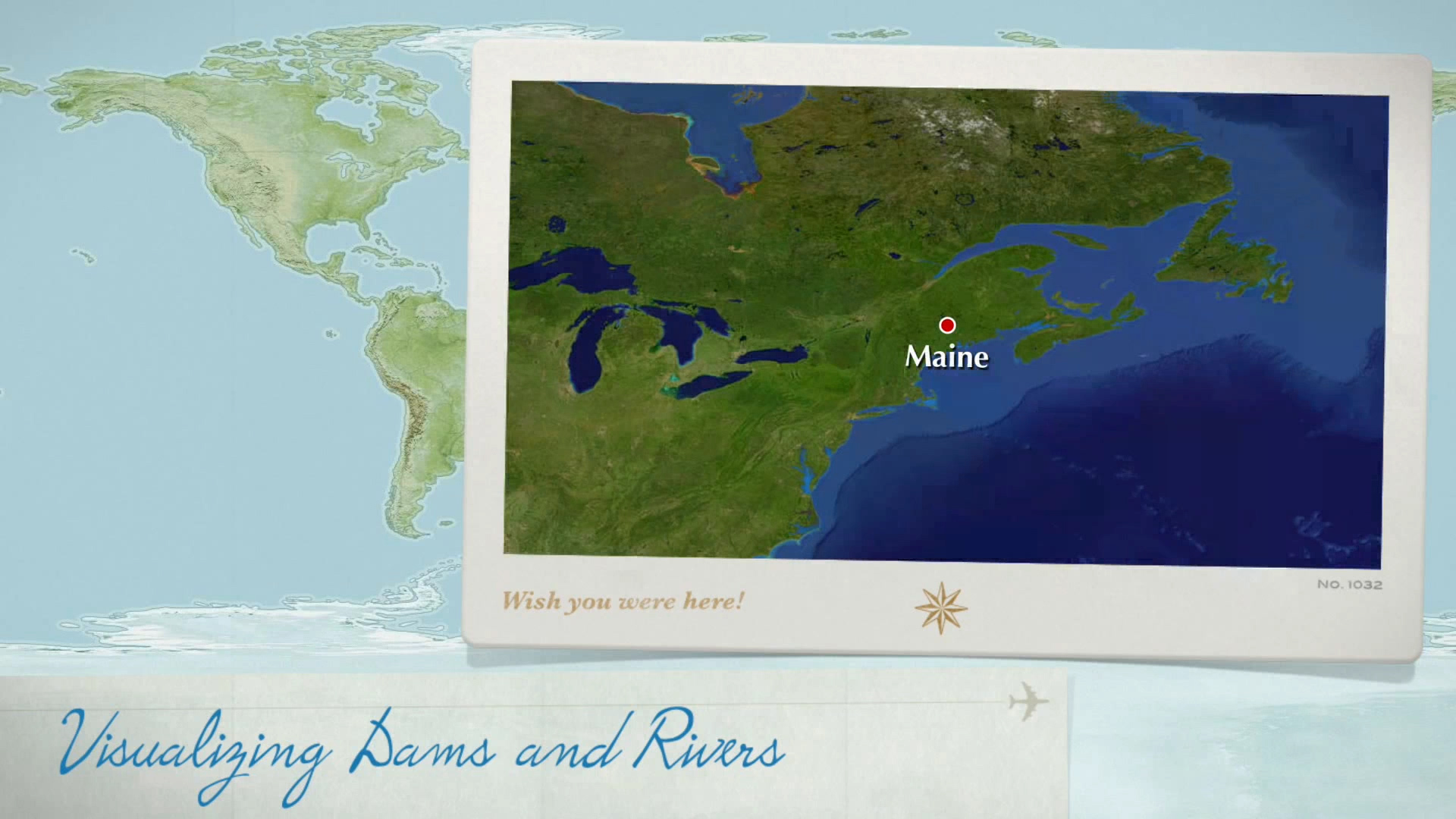

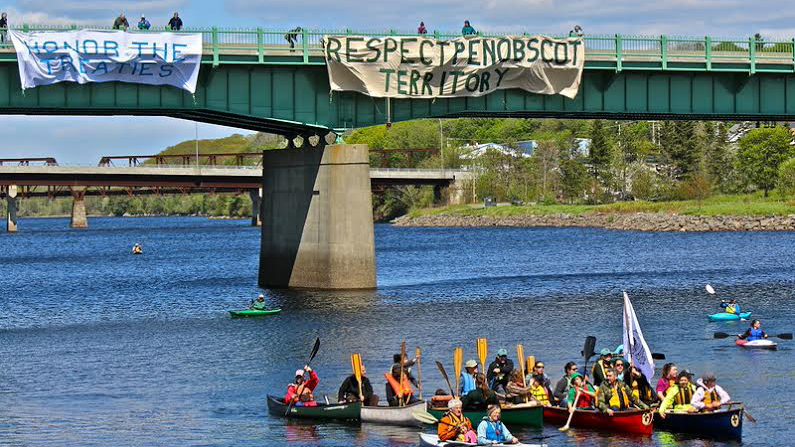
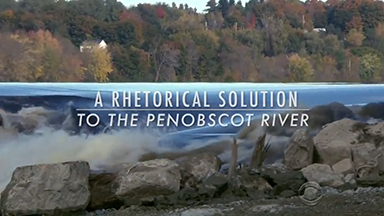
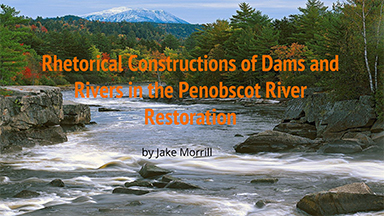
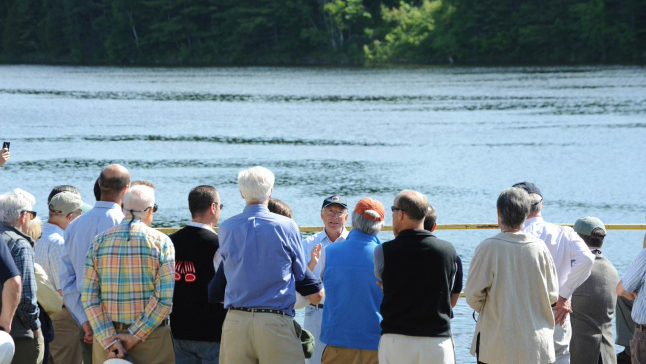
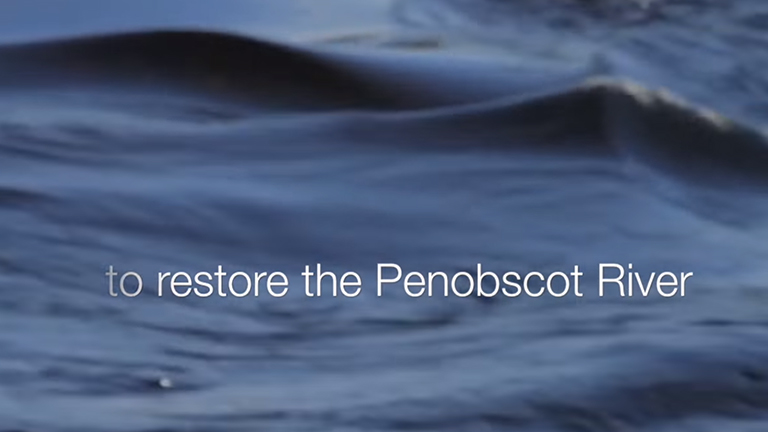
.jpg)